Tour of Alps - Part 2
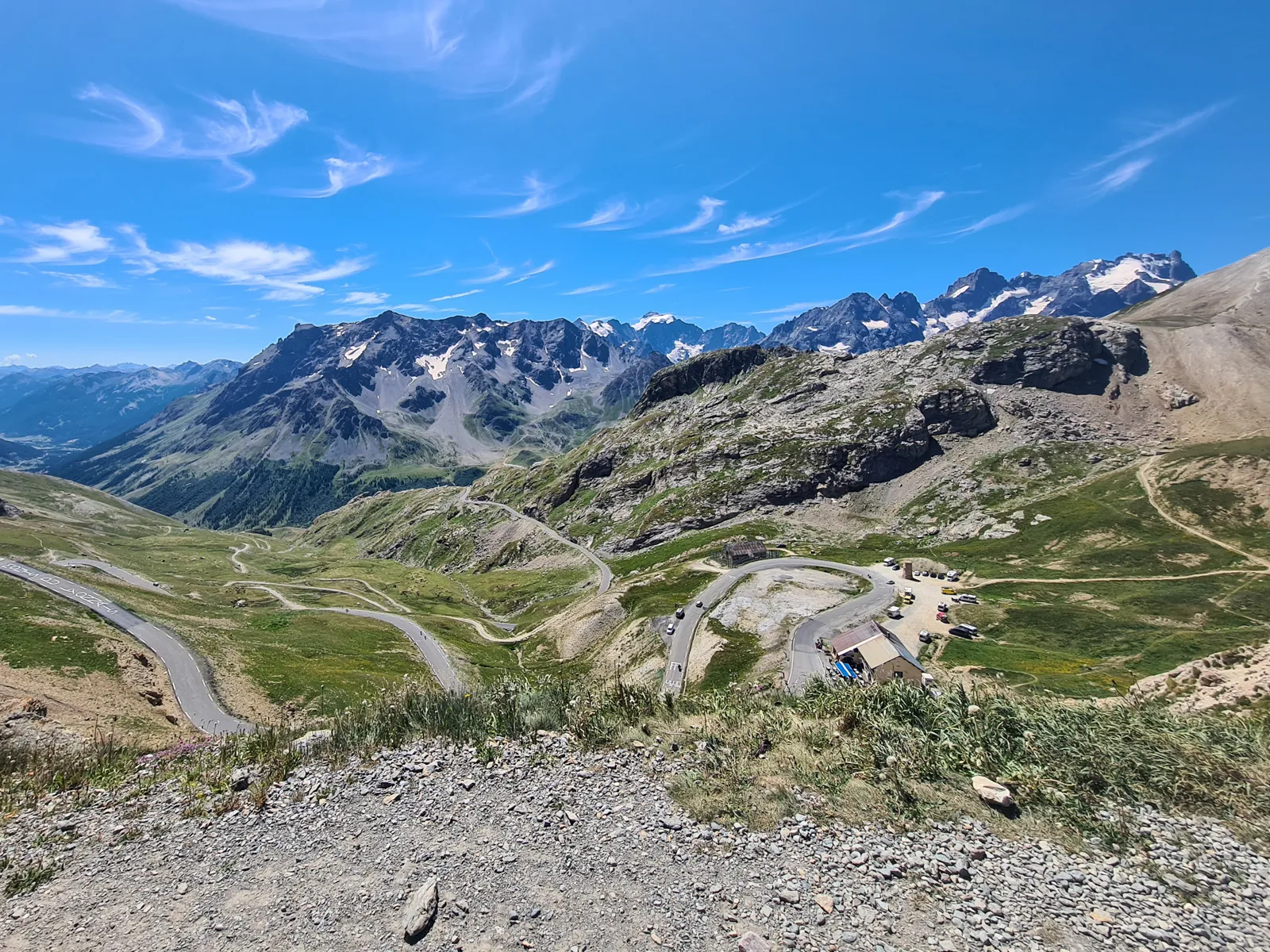
Stage 4 – Chamonix-Mont-Blanc to Grand-Aigueblanche
During a restful and amazing day off, I took a long walk from the campsite to Entrèves, followed by an incredibly scenic cable car ride to the high-altitude viewpoint of Punta Helbronner. At over 3,400 meters high, the ride is marketed as a "Trip to the Top of Italy" and offers breathtaking, uninterrupted views of Mont Blanc, Glacier du Géant, Grandes Jorasses, and the Aosta Valley. But it was time to wave Italy goodbye. With the help of a bus service and its helpful driver—who managed to accommodate my bicycle despite the lack of a rack—I made it to the other side of the mountain.
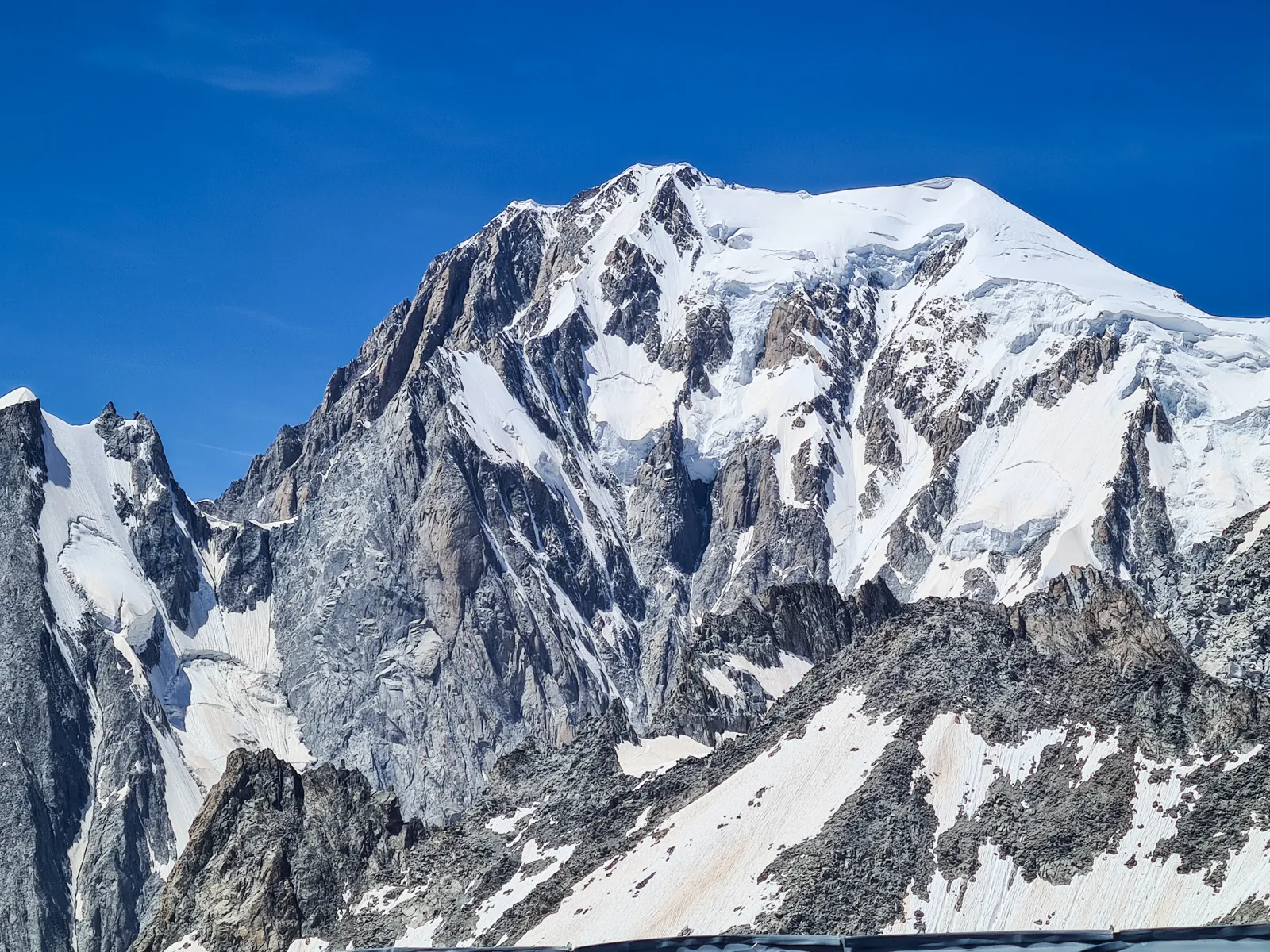
The route for the day was fairly easy. I treated it mostly as a transfer from Chamonix to the more interesting climbs rather than as a goal in itself. After grabbing a quick coffee in the heart of the Alpine climbing capital, I casually rolled along the valley toward Vaudagne. I frequently found myself gazing at the monumental Mont Blanc looming in the distance. While still magnificent, it didn't appear as spectacular as it had from Courmayeur. On the French side, the mountain is farther from the valley and features the more gradual slopes of Glacier des Bossons, whereas the Italian south face is a dramatic vertical system of walls, pillars, and couloirs. Despite my relaxed pace, the flat road at the bottom of the valley soon led out of town, entering the forest and gradually climbing. I took it easy, and before long, I found myself speeding down a very curvy, winding road through a small village. Even during the descent, I could catch glimpses of Mont Blanc between the trees and houses.
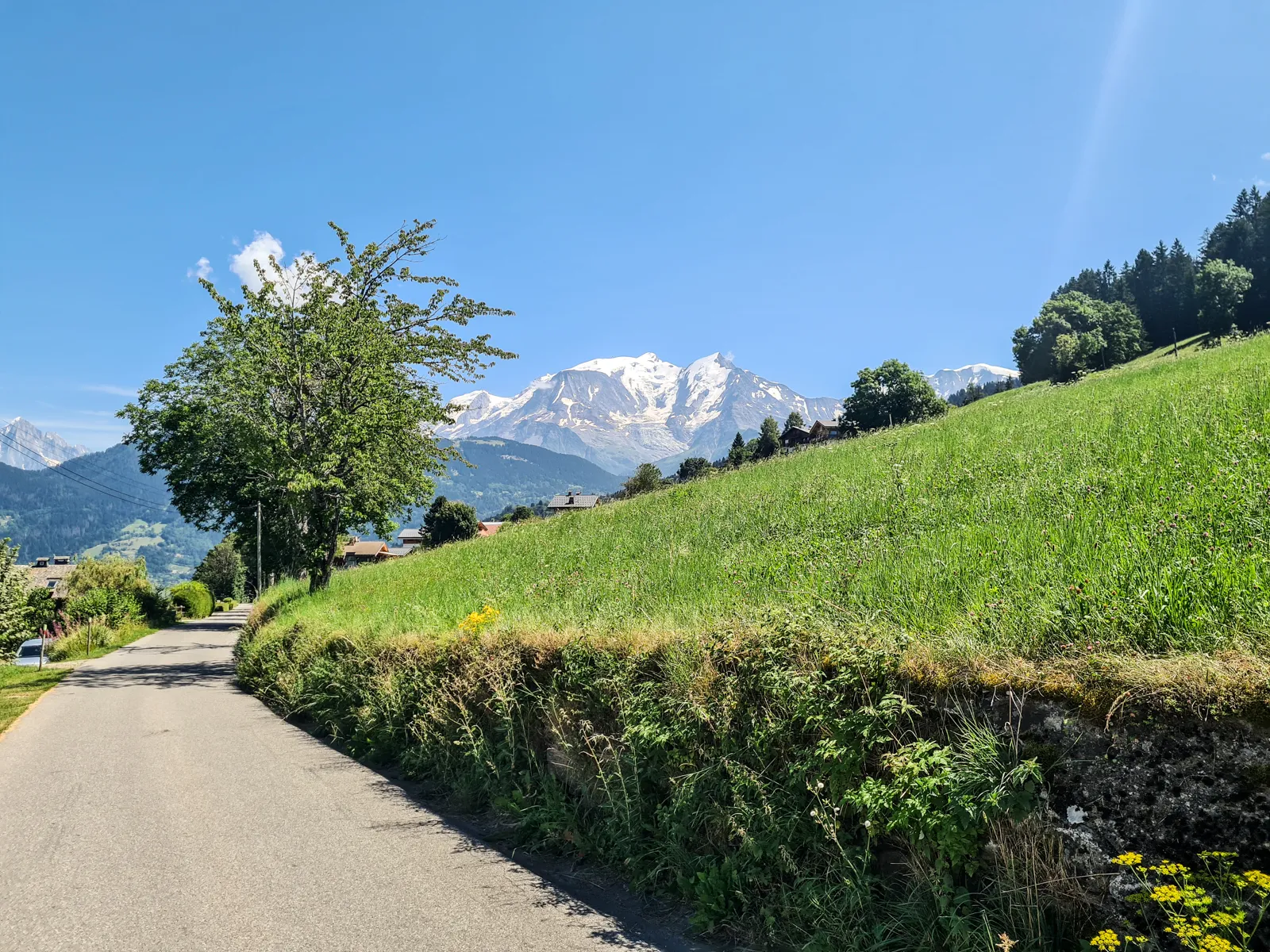
The route then led me through the forests of Servoz and down to the town of Le Fayet. From there, I climbed again, starting on a small road alongside the cable car, which eventually merged with the main road leading to Megève. The well-maintained tarmac, relatively gentle inclines, stunning views of the Aravis range, and a comfortable 30°C made for a very pleasant ride. After Megève, the route became even more enjoyable, as the road descended toward Flumet through a gorge. I love places like this—steep rock walls on one side of the road and a cliff on the other, revealing incredible landscapes. One final climb awaited me: the tranquil and scenic Route d’Héry.
Not much happened later that day. The rest of the route was flat and a bit monotonous, as you might expect from a transfer day. I slowly made my way from Ugine to Albertville, restocked dehydrated food and energy snacks at Decathlon, and lazily followed the Isère Valley toward the campsite.
Stage 5 - Grand-Aigueblanche to La Chambre
It was a grand day out! I started with one of the bigger climbs I had planned: the 26 kilometers of Col de la Madeleine. The ascent begins with a series of switchbacks in the forest, quickly gaining altitude before continuing along the right side of the valley all the way to the top at 2,000 meters. It feels like three smaller climbs, one after another, with short, flat-ish sections to rest before the next push. The first section felt... leisurely. I quickly found my rhythm, spinning consistently. Soon, the forest thinned out, and I could enjoy the first views of the two valleys—the one I had just left and the one I was heading into. As on all the previous days, the weather was marvelous, with warm sunshine lifting my spirits. I barely noticed when I passed the turn to the village of Bonneval, entering the first flatter section of the climb.
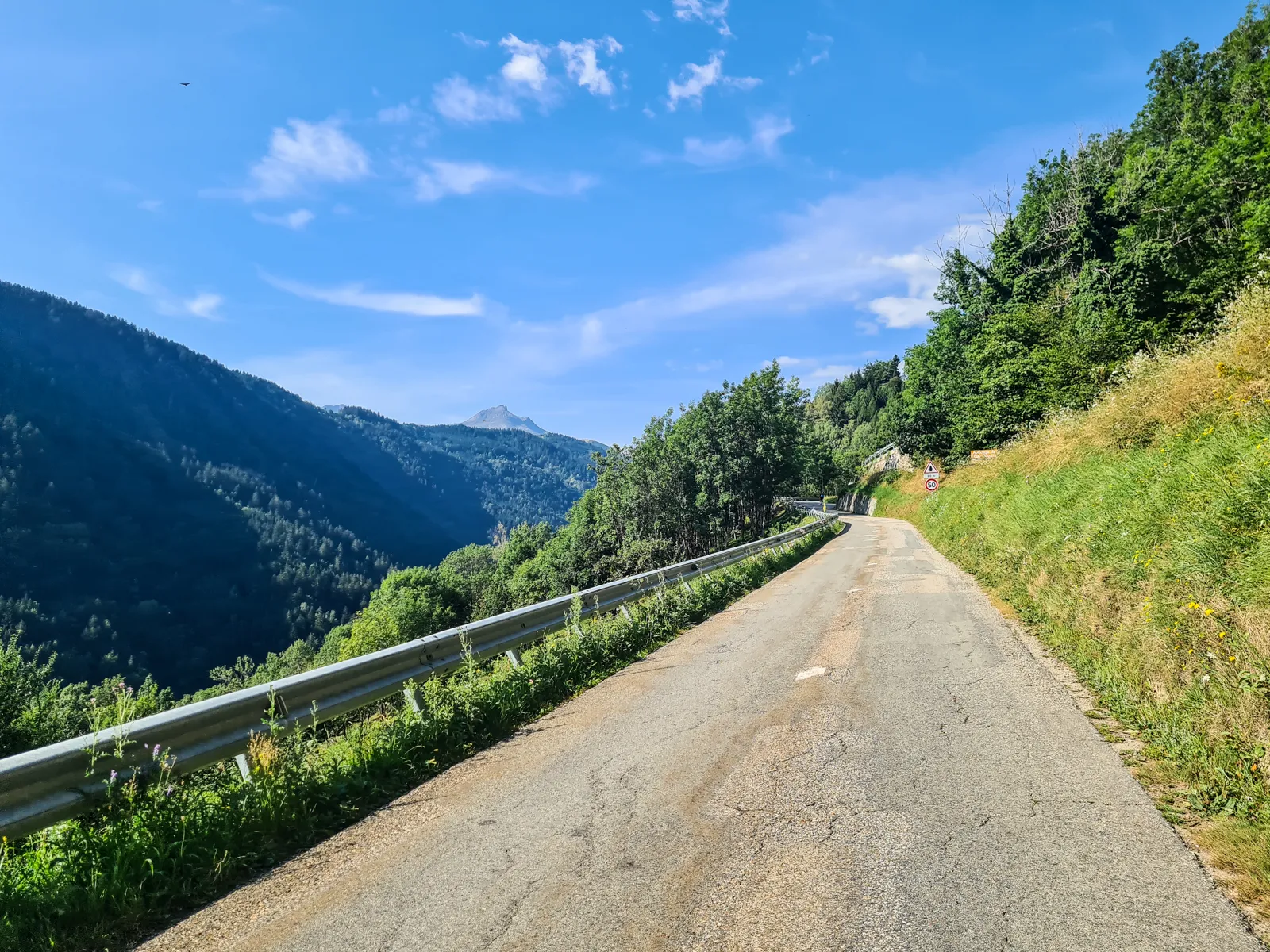
After four short but very relaxing flat kilometers, it was time to start climbing again. A few switchbacks brought me to a tiny yet picturesque village called La Thuile. Most of the trees in the lower half of the valley gave way to mountain meadows, sparse bushes, and scattered thickets. The road steepened again, and with every passing meter, I began to struggle. A few riders overtook me. Nothing unexpected—my luggage slowed me down, and most of them looked fitter than I was. Still, it played tricks on my performance-oriented mind, disheartening me. I began counting every 10 meters of elevation gained, every 100 meters of road conquered. But it wasn’t enough. Feeling utterly disappointed in myself, I had to stop.
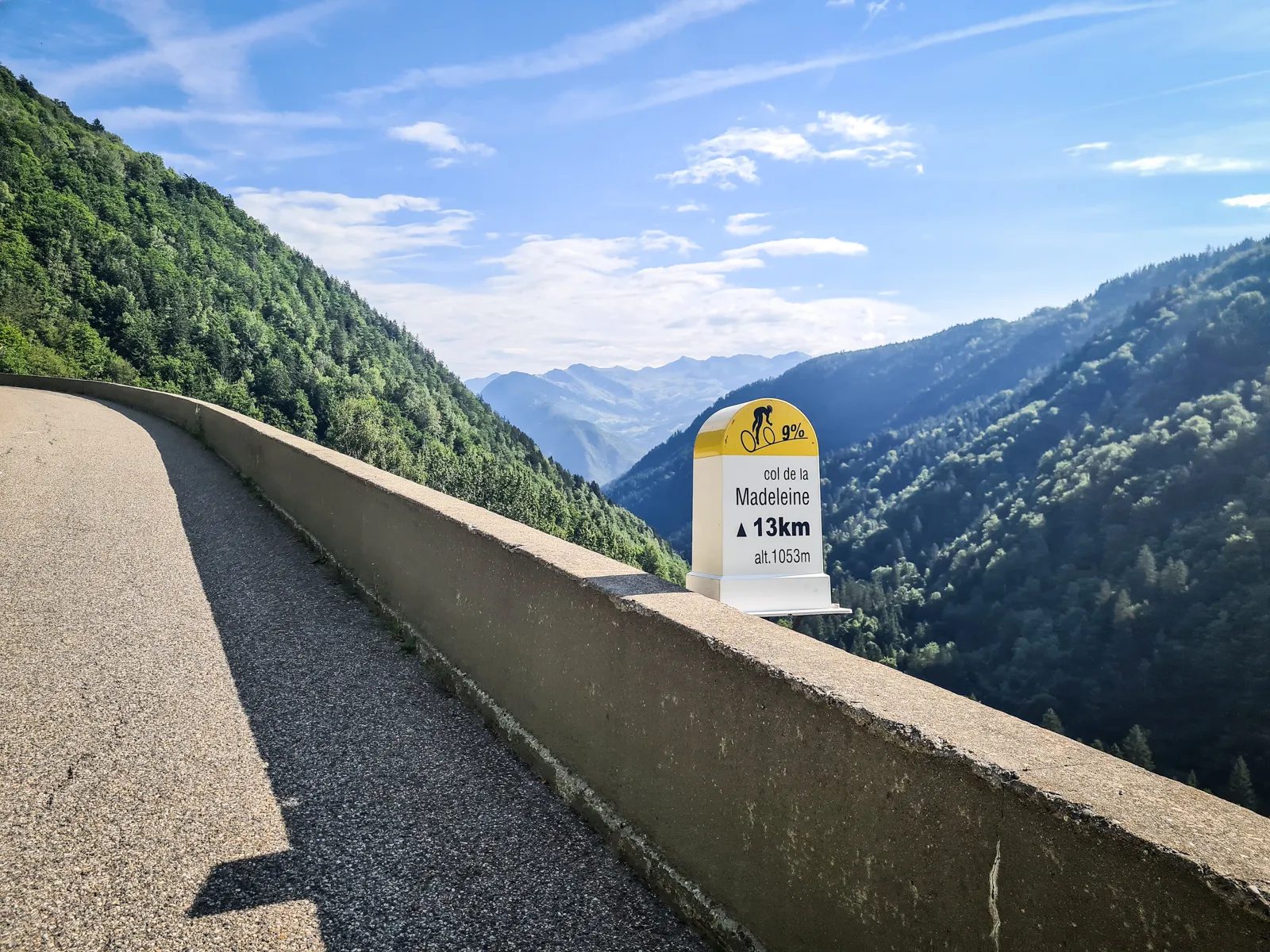
Climbing big mountains is all about pacing and strategy. Push too hard at the start, and you’ll burn out quickly. Take it too slow, and you lose precious time. Skip regular fueling, and you’re riding straight into a hard embrace of the Man with the Hammer. Every struggle has a familiar start: your legs start to burn. You play mind games to keep going, setting small, visible goals and pushing through. But then the gradient ramps up, and you realize you’re at your limit. You see 8 kilometers left to climb, with half a kilometer of elevation still to gain. And then... you blow up.
According to my GPX track, my break lasted around 44 seconds. It felt like an eternity. An eternity filled with shame. “Look at her; she couldn’t even finish one climb,” I imagined the people in passing cars saying. Back home, I would analyze the track and realize I had stopped on one of the steepest sections of the entire 25-kilometer climb. But at that moment, it felt like I had let myself down. Forty-four long seconds later, I started again, sluggishly turning the cranks at a slow but steady rate, determined not to blow up again.
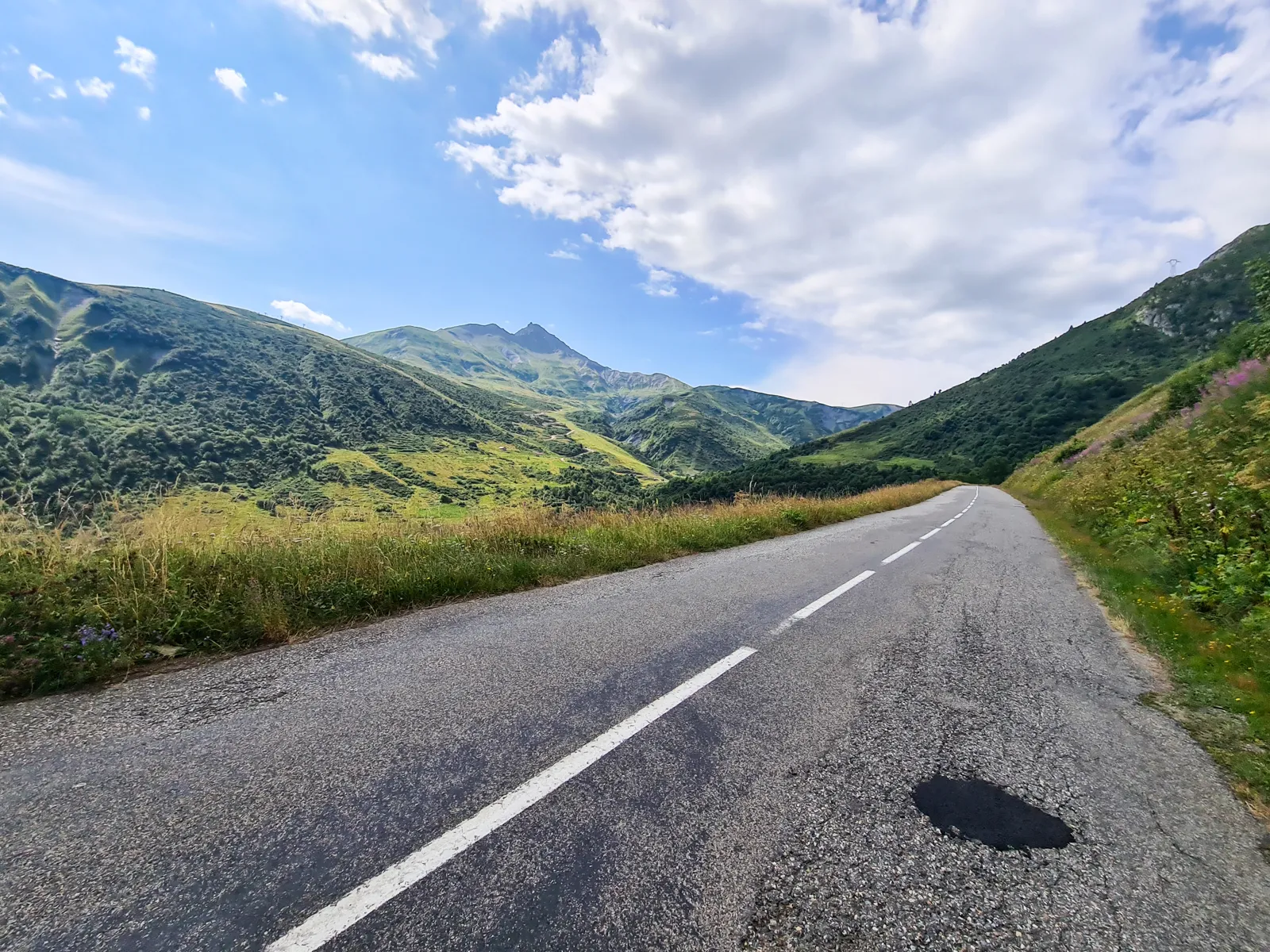
Twenty minutes and a mellow, restful section later, the gradient steepened once more. By then, I felt almost detached from my body. I was fully aware of my surroundings, soaking in the breathtaking landscape, but my legs felt distant, as though an external force was moving them. It was surreal. Then, as the road curved, the upper valley opened up, and I saw the final stretch of the climb ahead—a clear line cutting across the slope. Like most mountain roads, it looked challenging and intimidating, but not this time. “If I can see it, I can make it!” I thought. Gradually, my mind and body reconnected. My legs began to hurt again, but they were my legs, and I knew the crest of the pass was near. Finally, after almost two and a half hours of climbing—and over an hour of battling my doubts—the road leveled off. I took a photo of the sign at 2,000 meters, marking the highest point of the day.
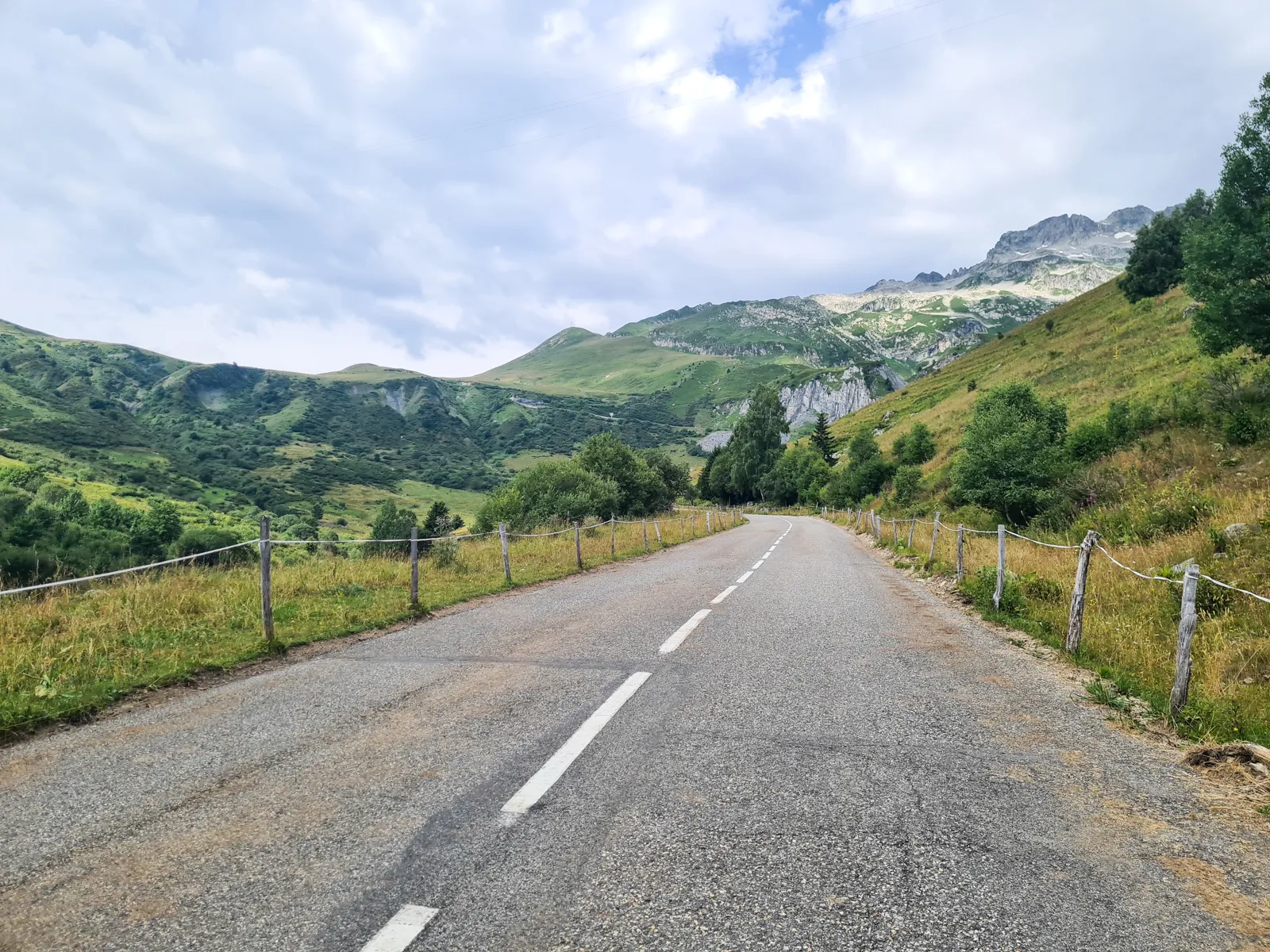
I tell myself that I ride for pleasure, to enjoy the sights and immerse myself in nature. And that’s true. But deep down, I’m always chasing numbers. Did I ride as fast as I could? Could I have pushed more watts? Would my legs feel fresher if I had a bigger cassette and could spin faster? Why did I bring so much luggage? Couldn’t I have packed lighter? Whenever someone overtakes me, I wonder: would I be faster than them if I rode without the extra weight? Without 11,000 meters of elevation already in my legs that week? I’ll never know.
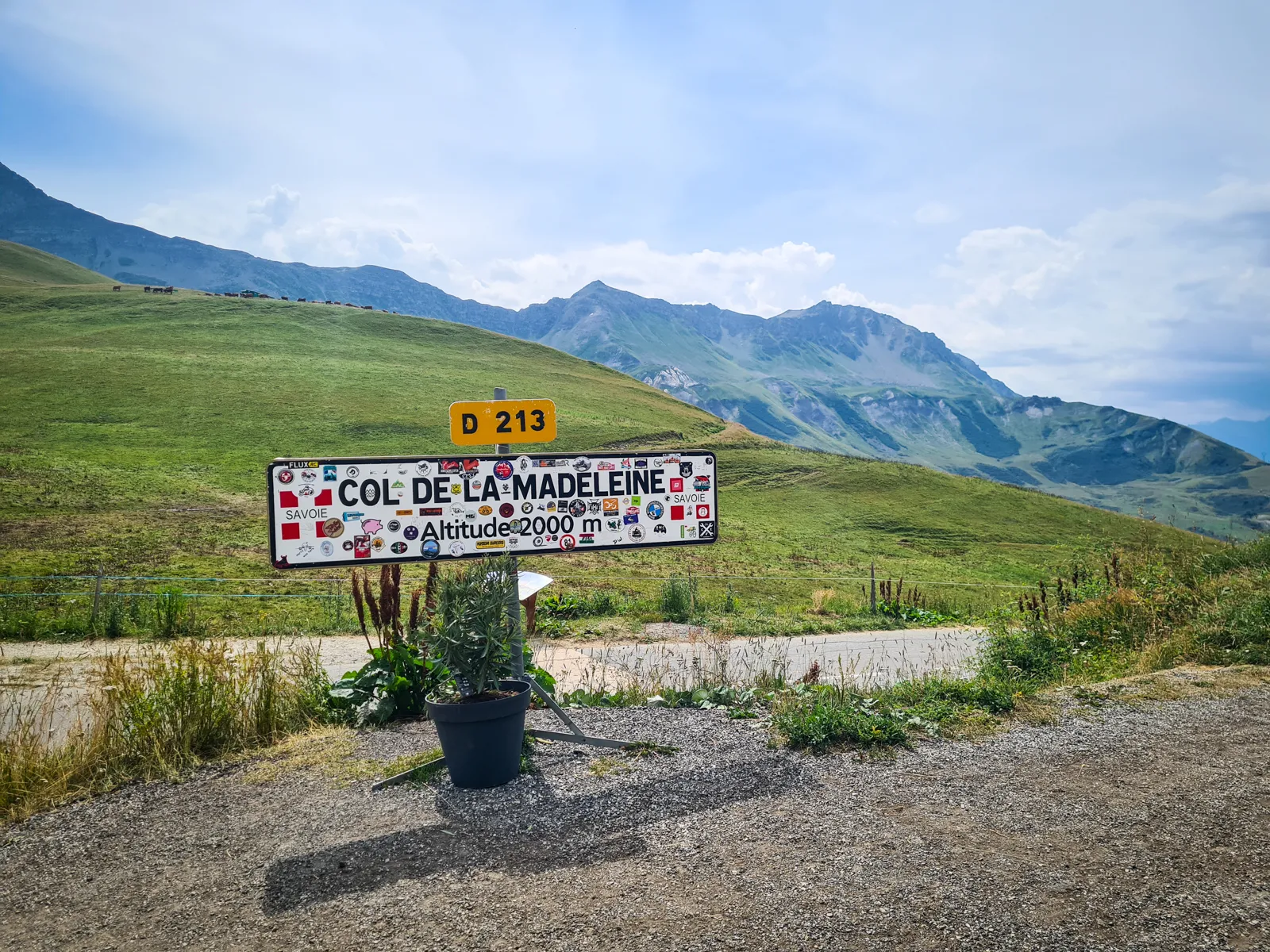
A chilly, humid wind and overcast skies over the valley ahead prompted me to put on my jacket and start descending after a brief rest. It wasn’t my fastest downhill—my front roll dampened my top speed—but it was a confident and comfortable one. I leaned into turns without hesitation and tensing up, picked braking points with precision. I scanned the road, assessed turn-in speed based on a Wahoo map, and e managed to enjoy the views along the way. I was serene. Passing an ambulance at what was likely a crash site didn’t shake me; it simply reminded me why confidence and skill are essential for speed and safety. Mindful of my limits, I descended all the way to La Chambre. I stopped at a bakery, and as soon as I arrived, the rain began.
After eating amazing, sweet pastries and drinking absurdly terrible cappuccino, I waited out the rain for about 90 minutes. Once it stopped, I set off again, shoe covers protecting my feet from the water spraying off my wheels. I rolled lazily along the valley, reaching the base of my next climb: the iconic Lacets de Montvernier. Though not the longest, steepest, or most famous road in the French Alps, its spectacular serpentines carved into a steep slope make it instantly recognizable.
Still remembering the morning’s struggle, I was skeptical about how the climb would go. But with plenty of daylight left, I knew I could take my time. One crank revolution after another, I moved forward. One hairpin at a time, I began to feel good. My cadence was comfortable, my power higher than in the morning. “I can do this!” I told myself. The road rose steadily, offering stunning views of the valley and the beautifully carved switchbacks.
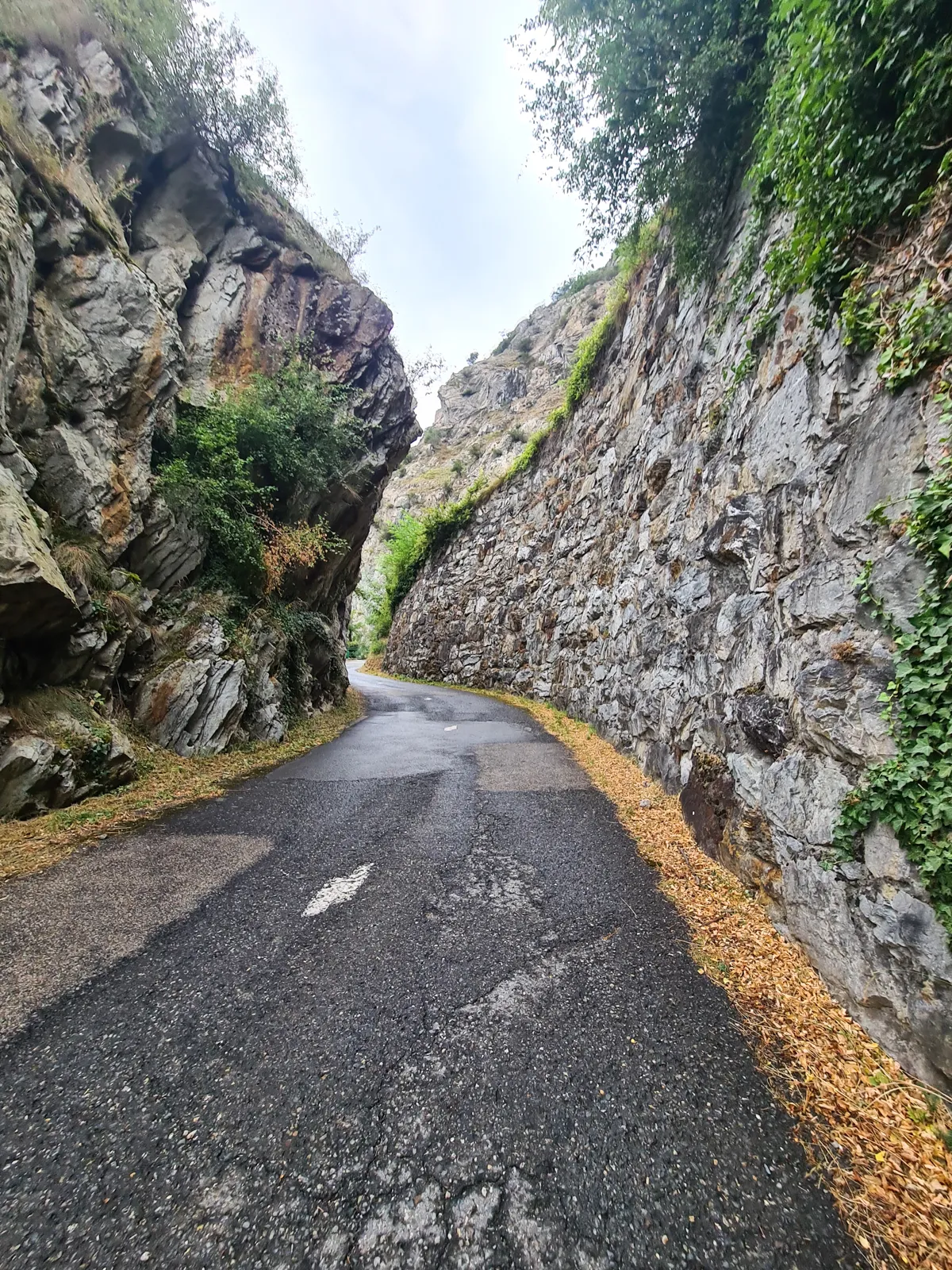
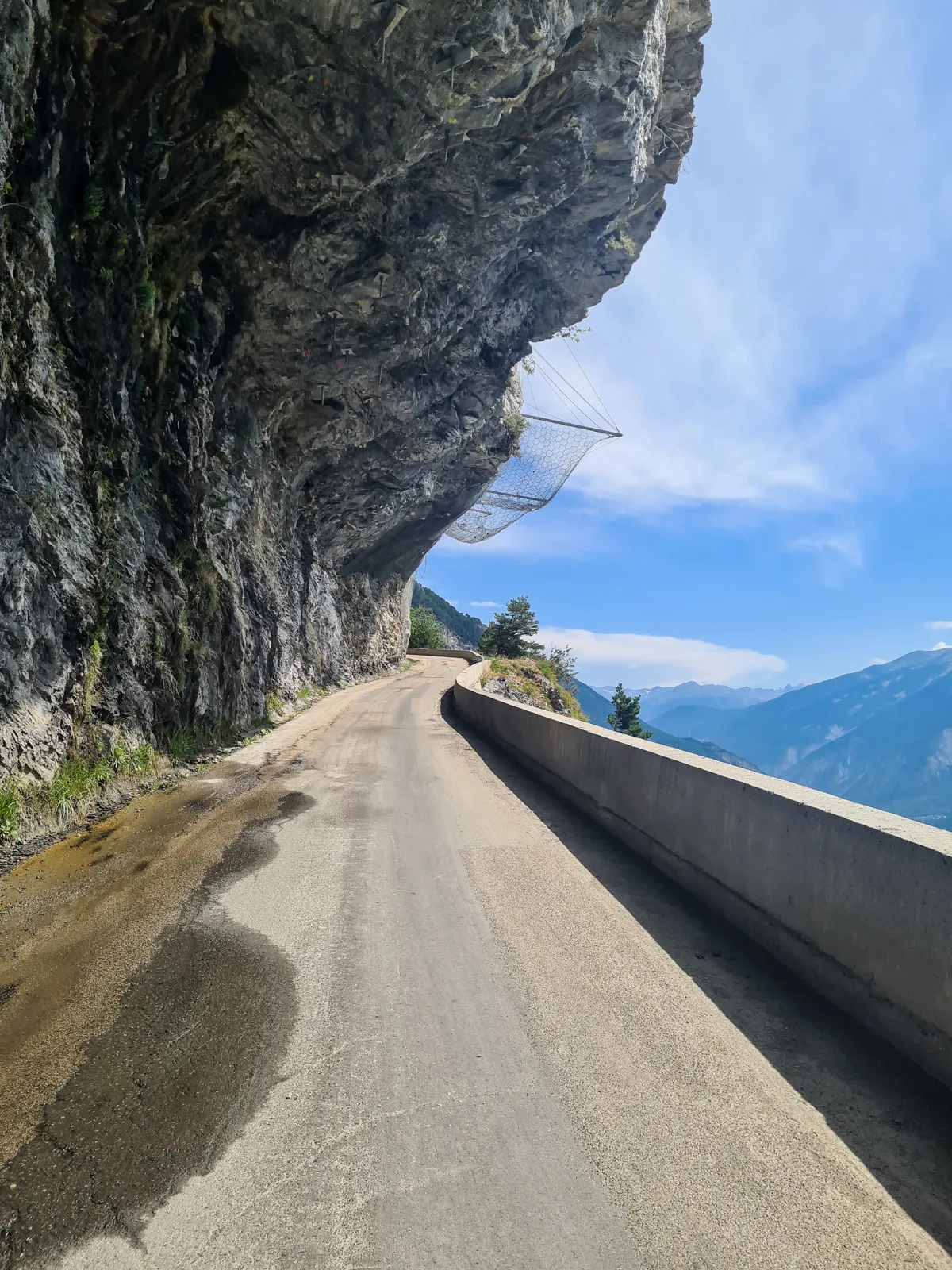
Before I knew it, I had passed the last hairpin and entered the village of Montvernier. Although the famous climb ended there, my route continued uphill toward the lesser-known Col du Chaussy. This quiet, unfrequented road led through a series of small villages. Locals cheered as I passed, and drivers waved encouragingly. It was a tranquil ride. Then, rounding a switchback, I spotted a massive diagonal crack high in the mountain face ahead. A grin spread across my face. I recognized it immediately: a balcony road. Few things excite me more than riding along mountain walls, with sheer drops on the other side. This was a delightful surprise!
The descent from the pass back to La Chambre was tricky. The narrow forest road alternated between wet and dry patches, requiring careful attention to grip. Fortunately, the gradient wasn’t too steep. Taking my time, I safely descended this section, and as soon as I merged with the main road I could speed toward my campsite for the night.
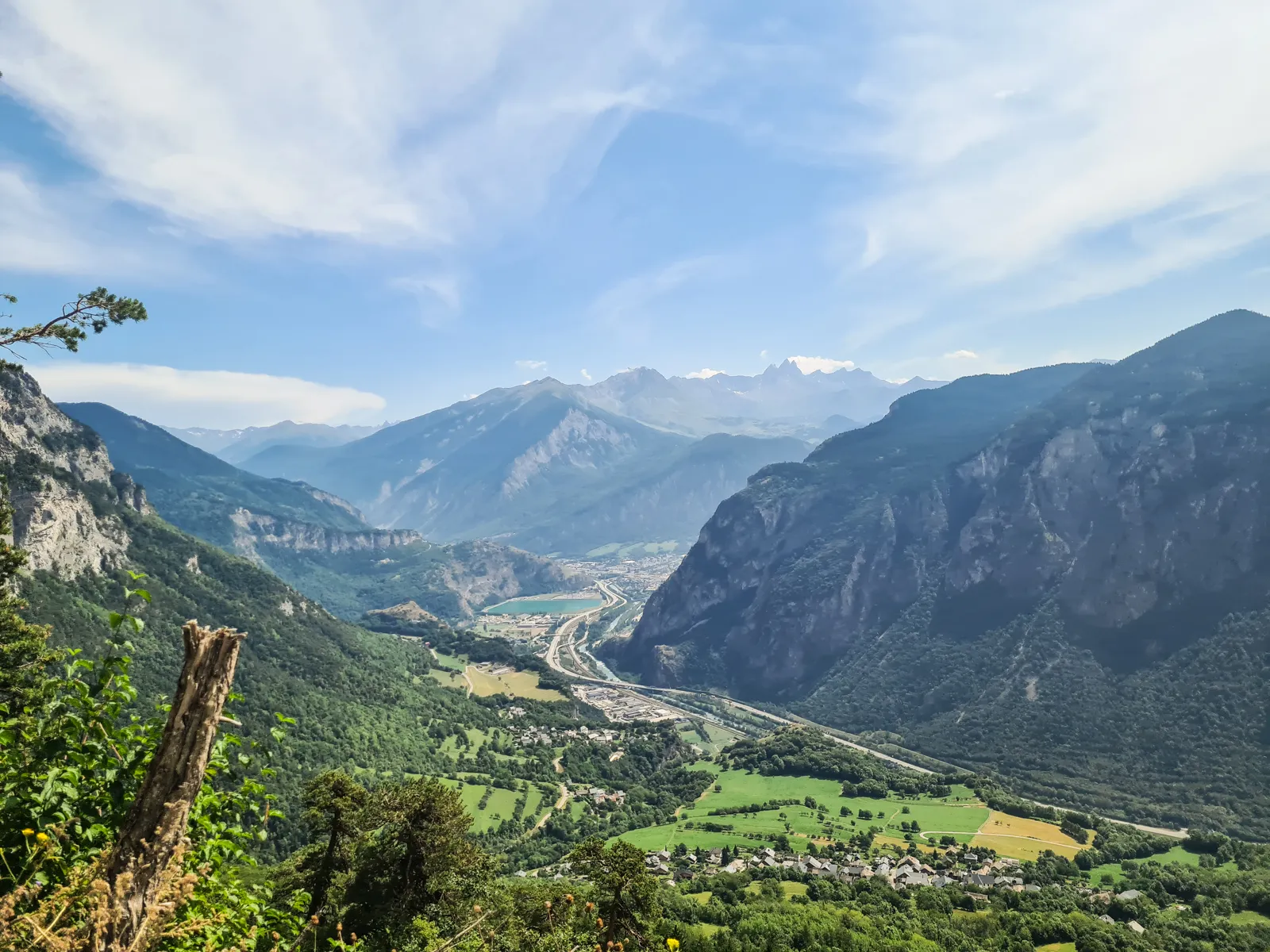
Stage 6 – La Chambre to Saint-Michel-de-Maurienne
As usual, I got up early and started to pack up. The evening before was a bit rough—my tent was pitched just by the playground, with teens playing football (soccer for my friends from across the pond), shouting, and listening to French hip-hop late into the night. No wonder it took me a while to crawl out of the comfort of a warm sleeping bag and into the chilly morning. I slipped into my riding clothes, disassembled the tent to let it dry from the overnight dew, and went to the sanitary block for my morning routine.
At first, I couldn’t believe it. My charger and power bank were gone! Did I forget to bring them in the evening for overnight charging? I rushed back to my already disheveled pitch and started frantically going through all my luggage. They weren’t there either. Maybe I’d plugged them into another outlet? I started running back and forth between my stuff and the lavatories building, but they were nowhere to be found.
In all my years of camping, in multiple countries, places, and settings, this had never happened—to me or anyone I know! After spending over half an hour on this unplanned search, I finally resigned, swiftly packed the rest of my belongings, and hurried away from the campsite that was still deeply immersed in slumber and oblivious to my misery. I just wanted to leave that wretched place behind.
I rode to the bakery I’d visited the previous day and ordered myself a big breakfast. As I took my first bites of a croissant, the sourness of the morning’s ordeal overtook all other emotions, and tears started to fall. I sat in front of the boulangerie, eating and crying. Other feelings soon joined in. For the first time during this trip, I felt lonely. Really lonely. I missed the possibility of talking to someone for longer than a polite exchange in a shop or a 10-minute chat with other riders about the road. I missed having someone to ride with—a presence, even if we would be silent for most of the day. A person I could lean on when things got tough. But I was alone. Just me, my thoughts, and the unmoved Alpine roads.
I finished my breakfast, tucked a leftover pain au chocolat behind the straps of my saddlebag, and set off. Leaving La Chambre, I felt sour. For the first time during the trip, I decided to dig out my headphones. Putting on feel-good music, I rolled toward Saint-Etienne, where the first climb of the day would start.
Col du Glandon isn’t one of the most well-known passes in the Alps. A little overshadowed by its bigger brother, de la Croix de Fer, it is still stunningly beautiful. The climb spans around 20 km, with 1,450 m of elevation gain. It definitely has its bite.
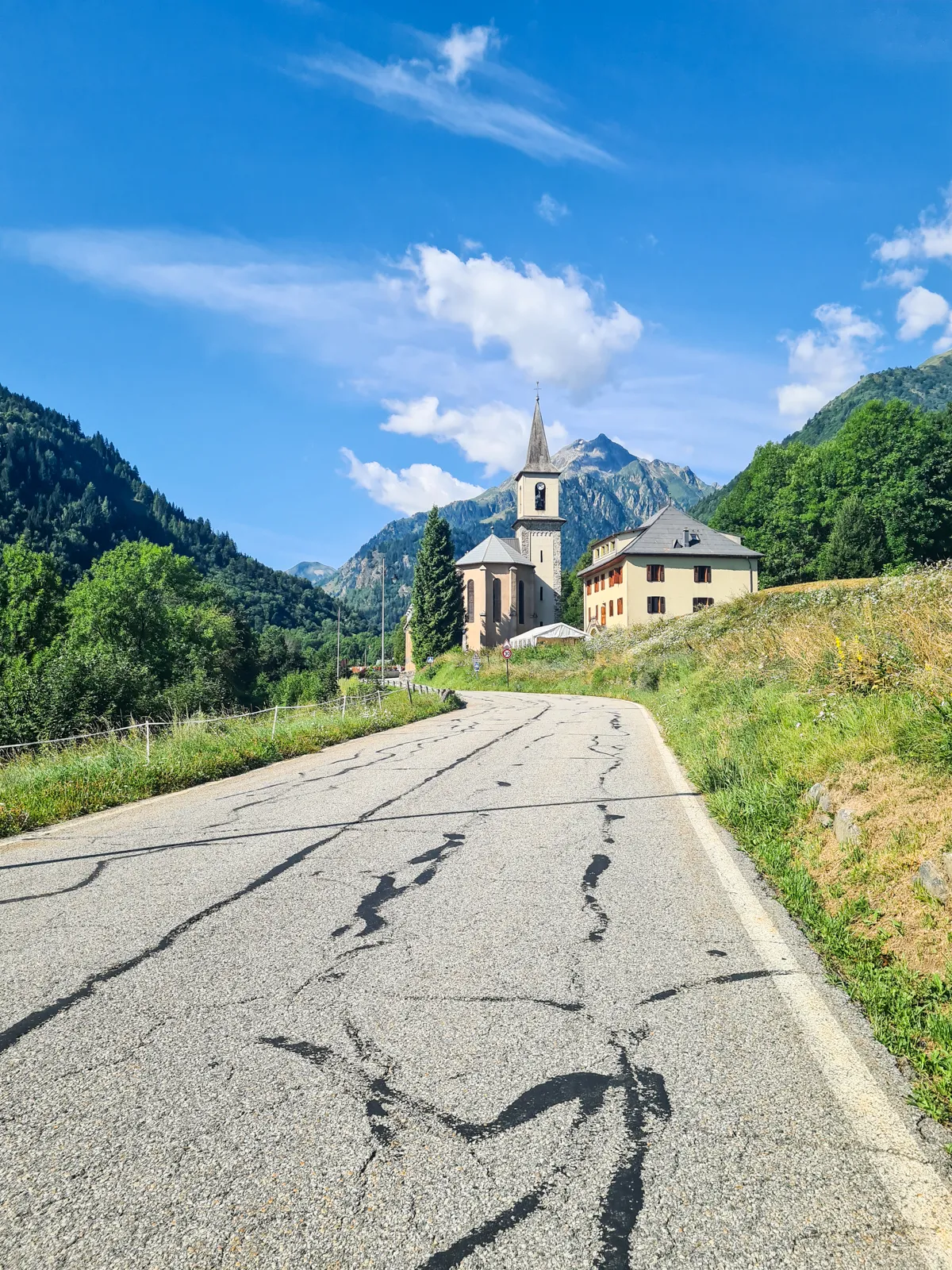
At first, the road winds through villages and meadows, soon transforming into a forest. I started spotting one good wild camping spot after another, half cursing myself for choosing that awful place I’d slept in. The pain of loneliness kicked back in, and I started dissociating from my body. Gripping my pendant—a token of a great friendship—my eyes filled with tears again. I rode and cried, on and off, for a good portion of the first hour of the climb. Yet, in some intangible way, that made me feel the presence of another person. Loneliness transformed into a kind of mental connection, as if someone significant were riding beside me, invisible.
Despite not being entirely present, I remembered to fuel. I started munching on an energy bar I’d bought two days before in Albertville. I didn’t notice it was a nut bar—not my favorite soft jelly type. It felt hard to bite and chew. I thought little of it, just taking mental note of how tired I must be despite the gradients still being merciful at this point.
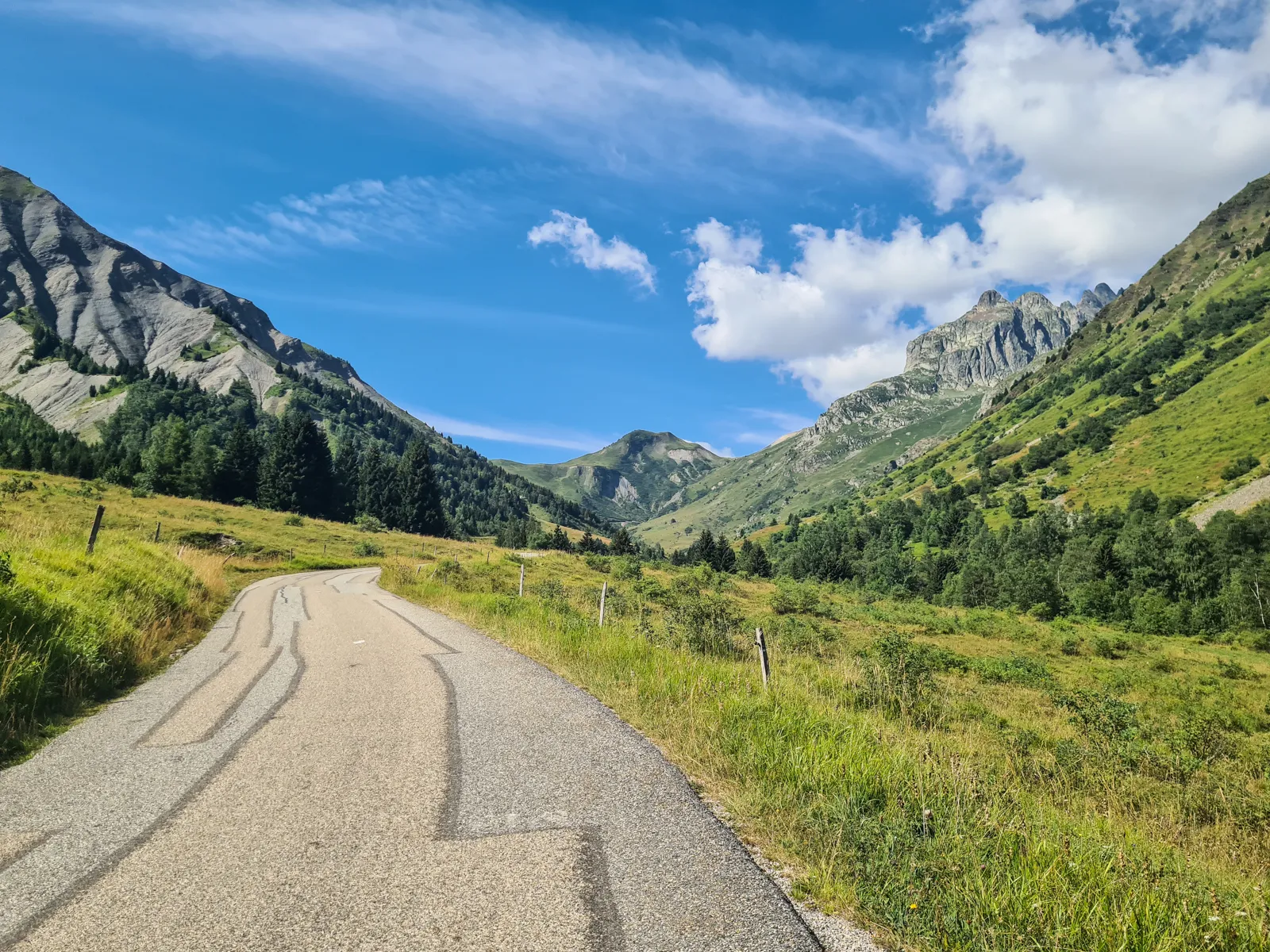
Around that time, the terrain began to change. Leaving the forest and entering the subalpine zone, with my emotions processed, I slowly returned to my body, taking in the scenery. The road steepened, and my body shifted into a zone of hard yet comfortable work. I focused on breathing, pacing, and indulging my eyes in the landscape. Knowing that in just ten days this very road would host the ultimate battle for the women’s Maillot Jaune, I pondered what might unfold, unaware that it would mark a significant moment in women’s cycling history.
About three kilometers before the pass, the road leaves the valley floor and climbs toward the ridge. This is where the climb gets brutal. It’s over 10% all the way to the top. Grinding along, you seem to move at a glacial pace, counting meters on the altimeter. You stop paying attention to power data, cadence, or heart rate. In such moments, it’s better to ride purely by feel. Seeing lower wattage than usual would only deepen your despair. These last three kilometers hurt. A LOT. You start playing mind games, setting micro-goals. The switchbacks cut their way across the steep slope, rapidly gaining elevation and widening the view of the surrounding mountains with each turn. You take in the scenery, trying to distract yourself from the relentless gradients burning your legs. You alternate your gaze between the landscape, the road markers, and your front wheel, as if doing so might somehow make the bike roll faster. But you know it won’t—it’s only your effort that can get you to the top of the pass. Yet, when you finally reach those last few meters, it feels as though you’ve conquered the top of the world.
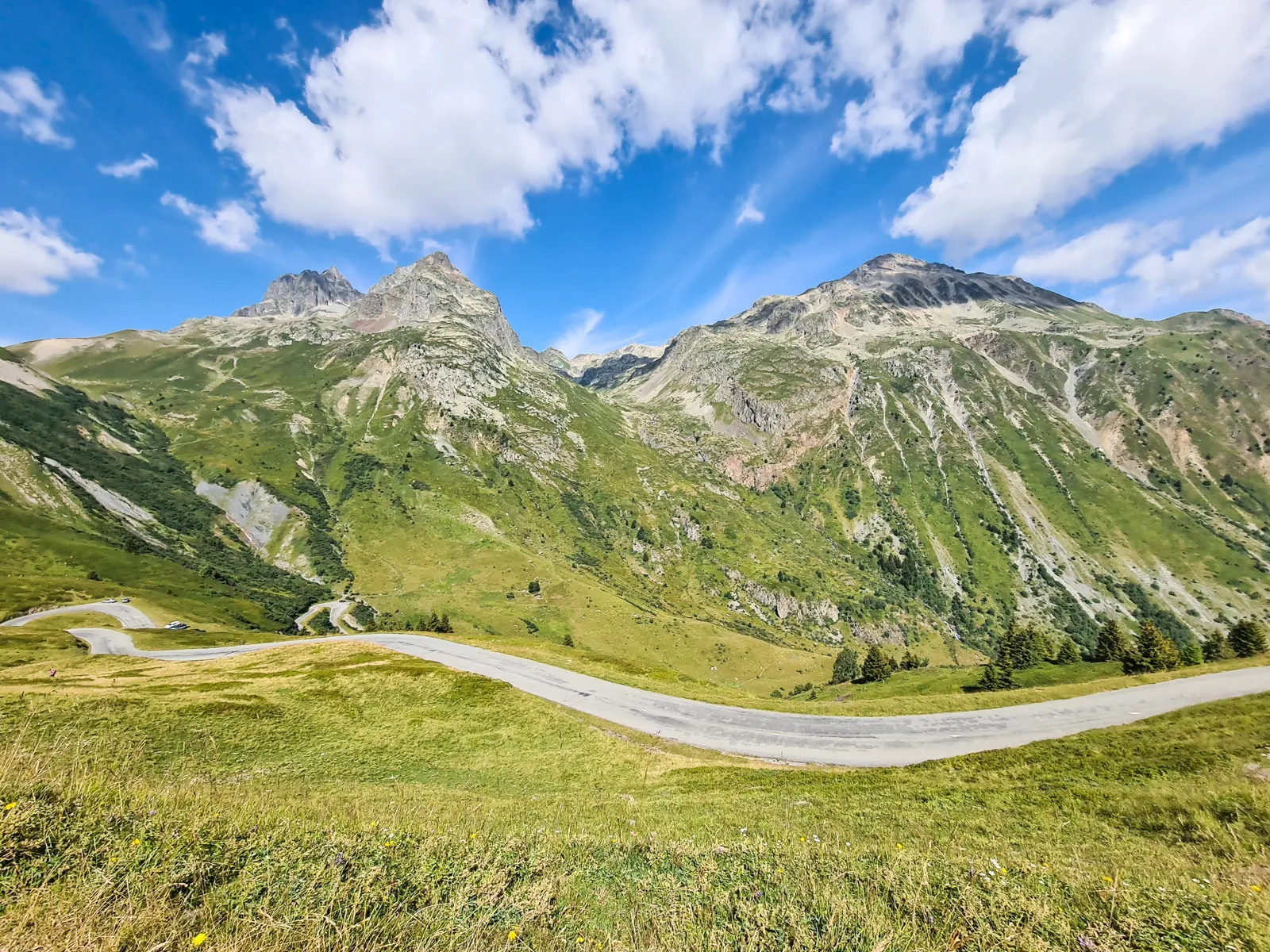
At last, I reached the summit of Col du Glandon. I made a brief stop to take a photo, then sped away, still having 150 m of climbing left to Col de la Croix de Fer. The shallower slope allowed me to recover slightly, spinning up to a comfortable 90 rpm. Passing other riders, I quickly reached the ridge and collapsed onto a ledge.
Unpacking a leftover croissant, I began eating, but every tiny bite seemed to grow into a monstrous size in my mouth. I was too tired to eat. I still didn’t connect the dots. I didn’t see the warning signs—for which I’d pay later. Somehow finishing the pastry, I treated myself to an exquisite espresso at the bar, refilled my water, and enjoyed a pleasant chat with the barista. Soon after, I was flying down the road toward Saint-Jean-de-Maurienne.
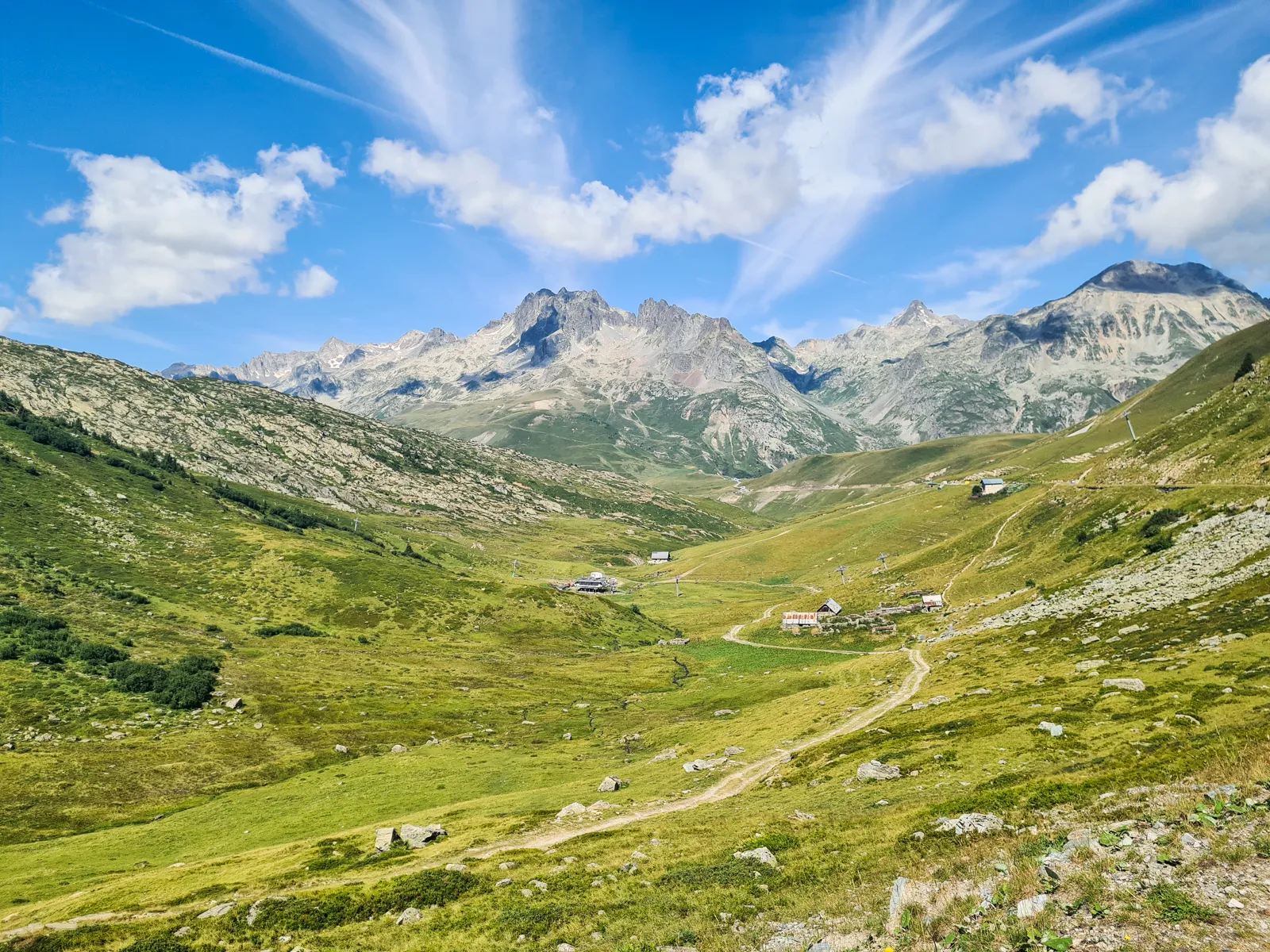
I didn’t make it to the bottom of the valley, though. Instead, I turned toward another hidden gem I’d found last minute among Komoot’s local highlights. The small village of Mollard, nestled near the col of the same name, sits on a plateau between the Arvan valley and the Aiguilles d’Arves ridge. It’s not popular and not overly difficult from the side I was riding. After the grueling finish of Glandon, it was a nice change. Averaging only 6.5%, it was a pleasant reminder that I could still ride easy and have fun. I enjoyed this climb immensely, basking in the warmth of the early afternoon sun.
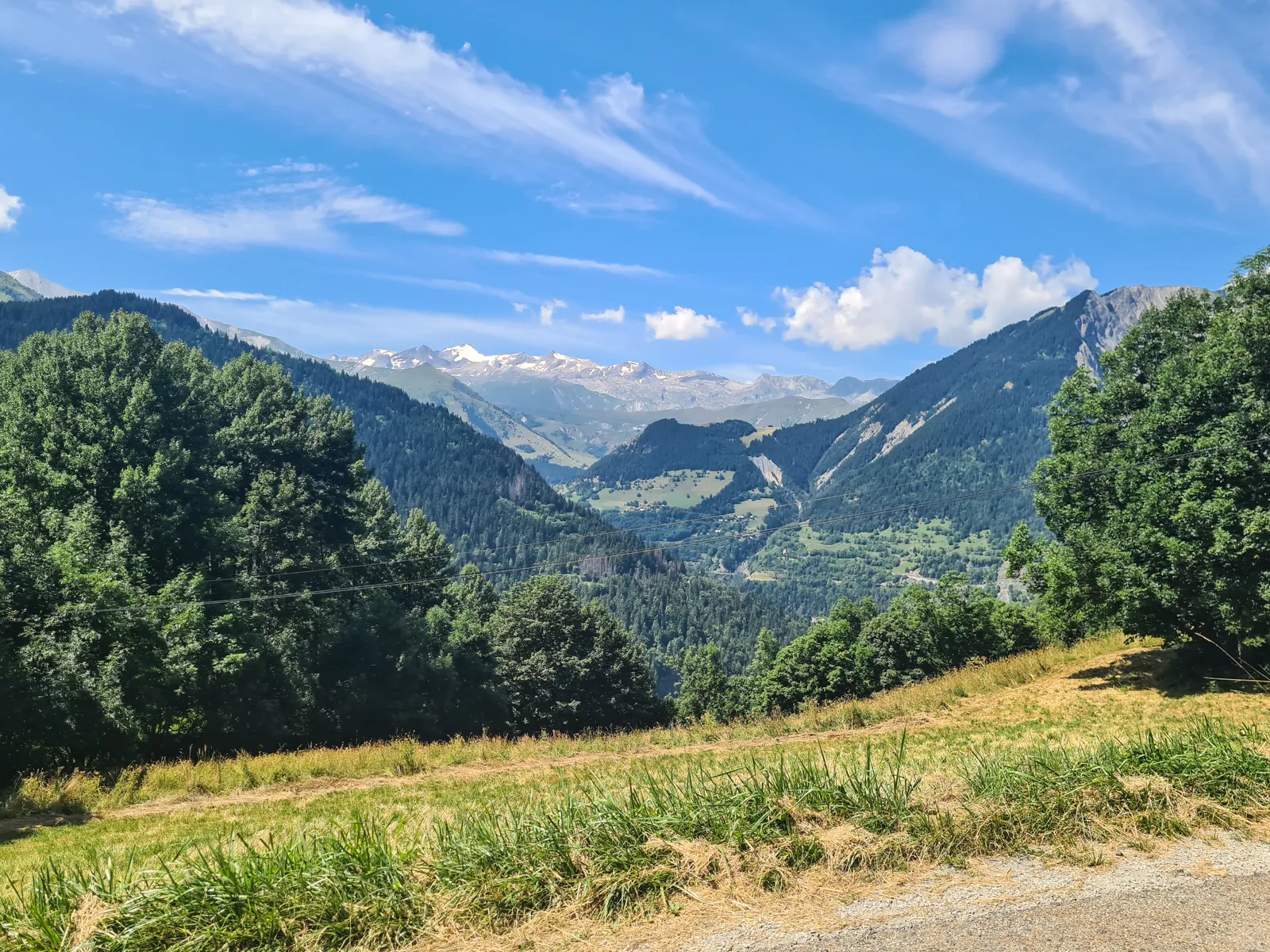
Then came the descent, and as soon as I pointed my wheels downward, I knew it would be an interesting one. It turned out to be quite technical, and feeling confident again, with the morning blues long gone, I decided to test the limits.
First, I tested the limits of my bike’s stability. The top part of the downhill was noticeably faster, with long stretches of slightly winding road connecting the few hairpins. My front bag naturally limited my top speed, so I played around with aerodynamics, feathering the brakes only when absolutely necessary and smoothly leaning from one turn to the next.
The bottom half of the descent was a series of irregular, tricky switchbacks. With sharp turns and lower speeds, I shifted from experimenting with fluidity to pushing my brakes. “Carbon rims don’t brake! You just hold on the levers for dear life and wait for the bike to decelerate!” Well, I wanted to challenge that claim. The last few days had already shown me that these stereotypes weren’t entirely true.
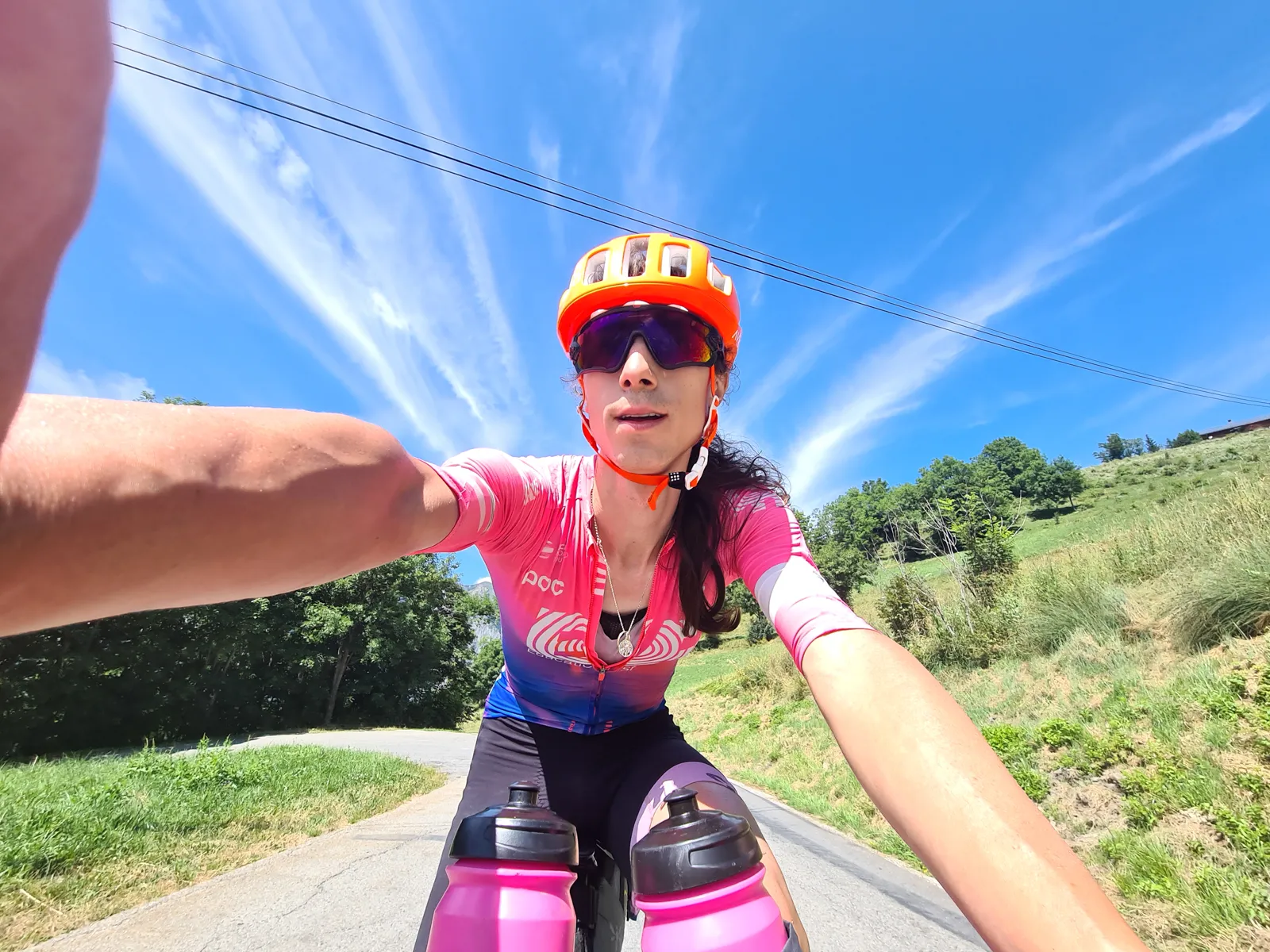
Trail braking on a road bike is a delicate dance with your brakes, a technique that defies the usual advice of “never brake in a turn.” Instead, it’s about control and precision. You begin by braking hard as you approach the corner, scrubbing off most of your speed while still upright. Then, as you lean into the turn, you gradually ease off the brakes, letting the tires grip the road as your momentum carries you through the apex. The pressure on the levers decreases in perfect harmony with the angle of your lean, balancing the forces at play. It feels counterintuitive at first—after all, we’re taught that braking mid-turn is risky business. But when done right, it’s like unlocking a secret rhythm between you and the bike.
The key is trust—trust in your tires, trust in your brakes, and most importantly, trust in yourself. It’s not a technique to use recklessly, though. Overdo it, and you risk losing grip or throwing off your line. But nail it, and you can carve through tight corners with a speed and confidence that feels almost magical. It’s not just about getting through the turn; it’s about owning it, riding that fine line between control and chaos.
With every switchback, I began braking later and harder. My turns became more aggressive; I decelerated faster and regained speed more quickly. Twice, I overdid it—either braking too late or releasing the brakes too soon into the turn—and almost sent myself into the barriers. “Whoa, Pati, hold your horses!” I scolded myself, feeling the rush of adrenaline followed by a shiver of fear. “You’re here to enjoy the ride, not send yourself to a surgeon trying to squeeze out one more kph on a sketchy switchback.”
That second scare sobered me up. I stuck to an aggressive but safer pace for the remainder of the descent.
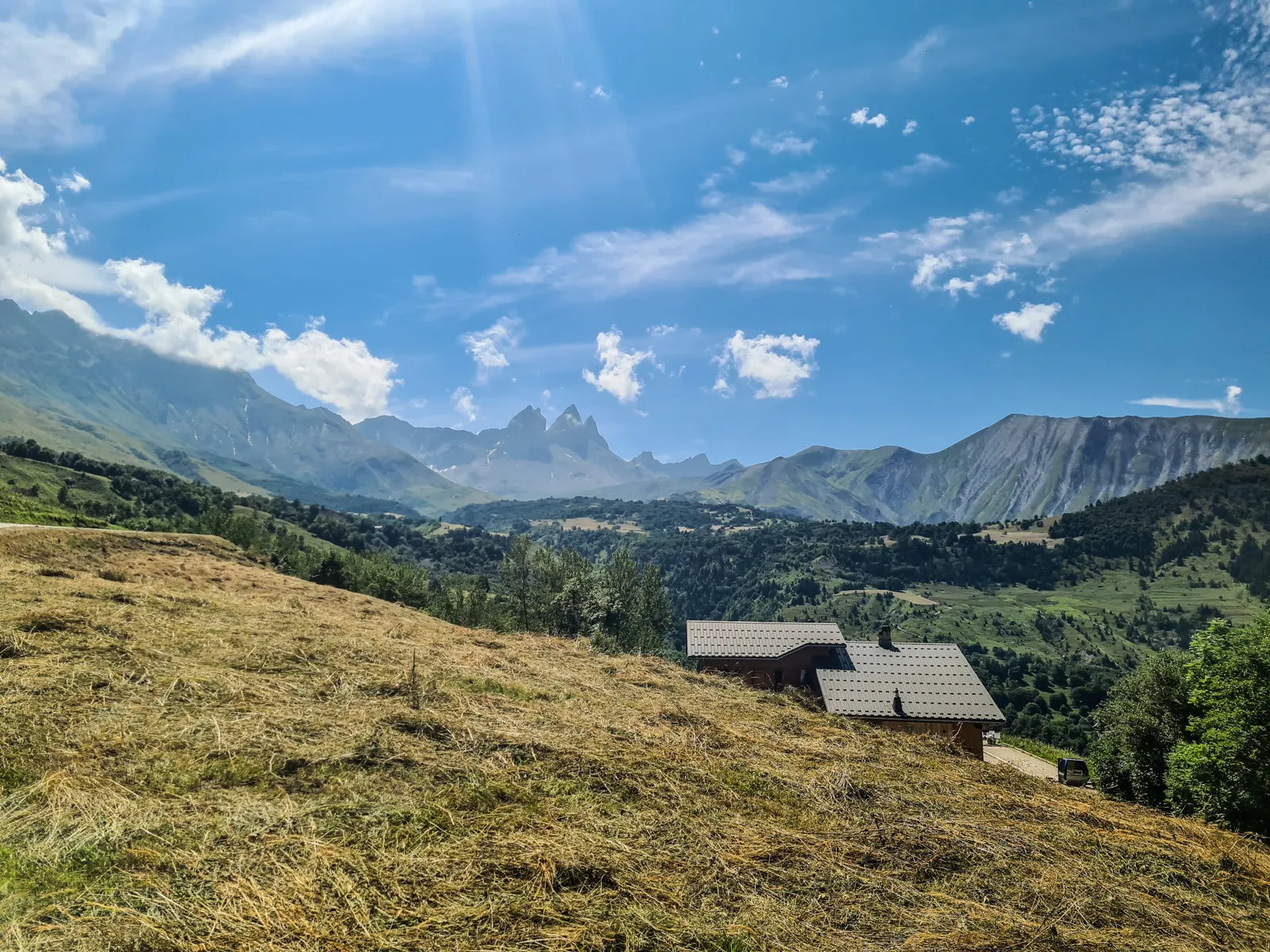
When I finally rolled into the city, I pulled over at the first pizzeria I spotted. I sat down, my stomach growling as I watched waiters carrying out steaming plates of food. Relief washed over me—until the waiter rolled her eyes and informed me that the kitchen was closed and wouldn’t reopen for another five hours.
Great.
I still had about 15 kilometers to my final destination, and I was famished. The croissant from earlier was a distant memory, and I felt like I could eat a horse. Luckily, while the main kitchen was closed, the self-service bar was open. I ordered a hot, calzone-like pastry and a bottle of Coke. It wasn’t nearly enough to fill me, but it provided temporary relief.
As I ate, I considered my next steps. Losing a charger and a power bank the previous night had left me with only one of each, and I was worried it wouldn’t be enough to comfortably keep my phone, Wahoo, sports watch, and two lights charged. I needed replacements. Fortunately, Saint-Jean-de-Maurienne was a sizeable town, and I managed to find an open home goods store to restock my electronics.
With my batteries replenished—both figuratively and literally—I followed my preplanned route. It took me along a scenic side road with beautiful views of the mountains on the other side of the valley.
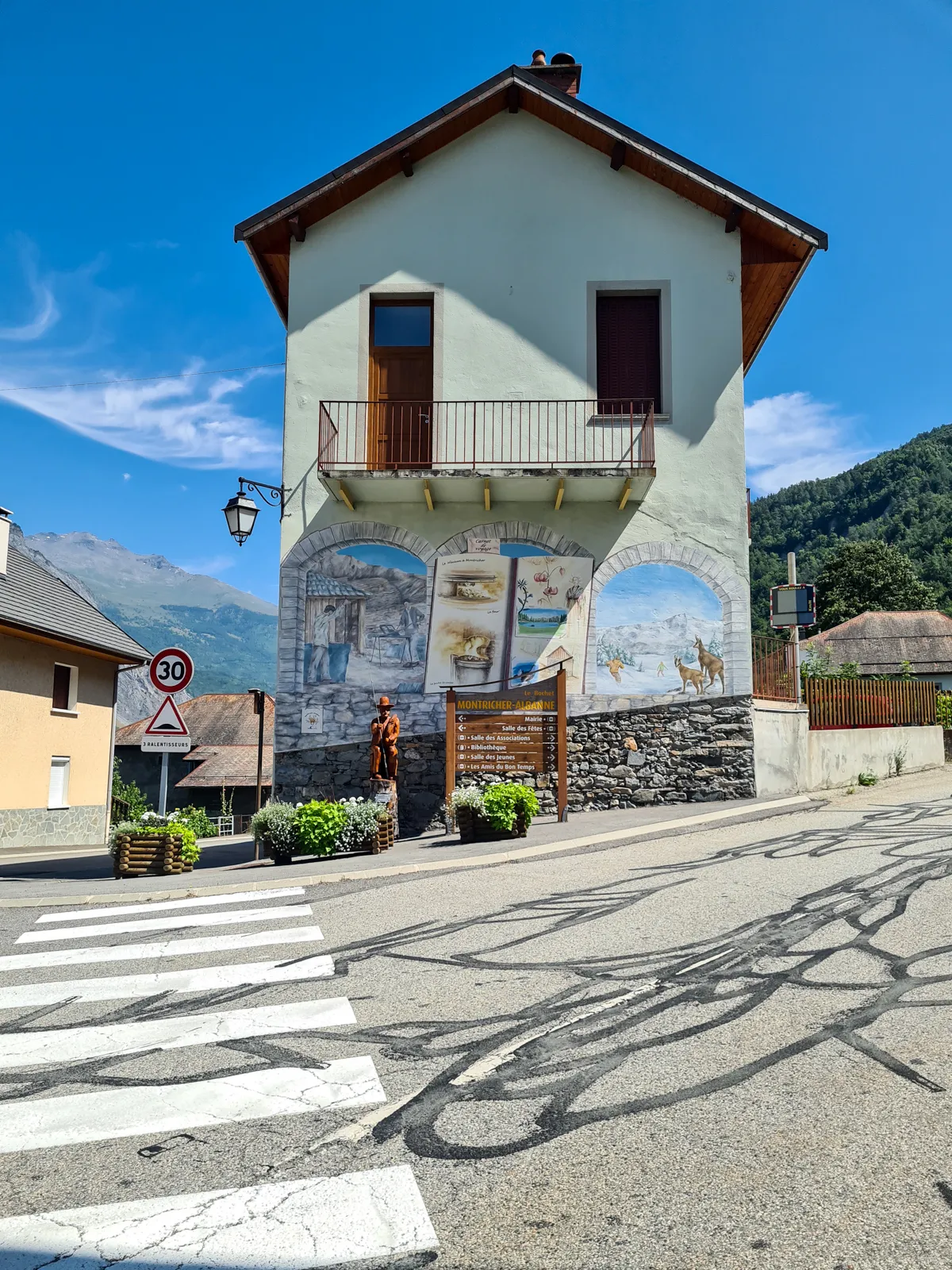
But then it turned into a closed road leading into a local quarry. For the first time on this trip, I got Komooted!
Exhausted, a bit hungry again, overheated, and low on water, I felt angry and defeated. So close, yet so far. Checking the map for an alternate route didn’t bring much joy. I didn’t have to make up much ground, but the only available road was a main transit route with a bike lane on the shoulder—not the picturesque finish I’d envisioned for the day. But I had no choice.
Jump-scared multiple times by honking trucks, I finally rolled into Saint-Michel-de-Maurienne, relieved beyond measure.
The campsite greeted me with a cheery “No free pitches available,” followed by a “but we do have a hotel room.” I seriously considered splurging for the comfort of a bed and closed doors, especially after the misfortunes of the previous night.
I hesitated for so long that, in the meantime, someone canceled their pitch reservation, and it became available. I took it.
Setting up my tent, I changed into a dress and, after a quick round of laundry, headed into town to hunt for food. A stroll down the main street and a quick check of Google Maps in search of any open bar led me to a supermarket, where I stocked up on baguettes, dry sausages, sweets, and other essentials. At 7:30 pm I wanted to be in a sleeping bag, ready for an evening relax, not beginning a dinner at a restaurant. To settle down with my e-reader and wind down after a day filled with highs, lows, and everything in between.
Stage 7 - Saint-Michel-de-Maurienne to Le Monêtier-les-Bains
The next day greeted me in good spirits. I felt rested, had a good night’s sleep, and was eagerly looking forward to the day’s itinerary. My plan was to conquer the highlight of my tour: Col du Galibier via Valloire, a 2,000-meter ascent famously associated with Le Tour’s Souvenir Henri Desgrange. Following that, I aimed to descend to Briançon, with a detour to tackle the brutal Col du Granon. With this ambitious agenda in mind, I enjoyed a substantial breakfast, packed up my gear, and set off toward Col du Télégraphe and Valloire.
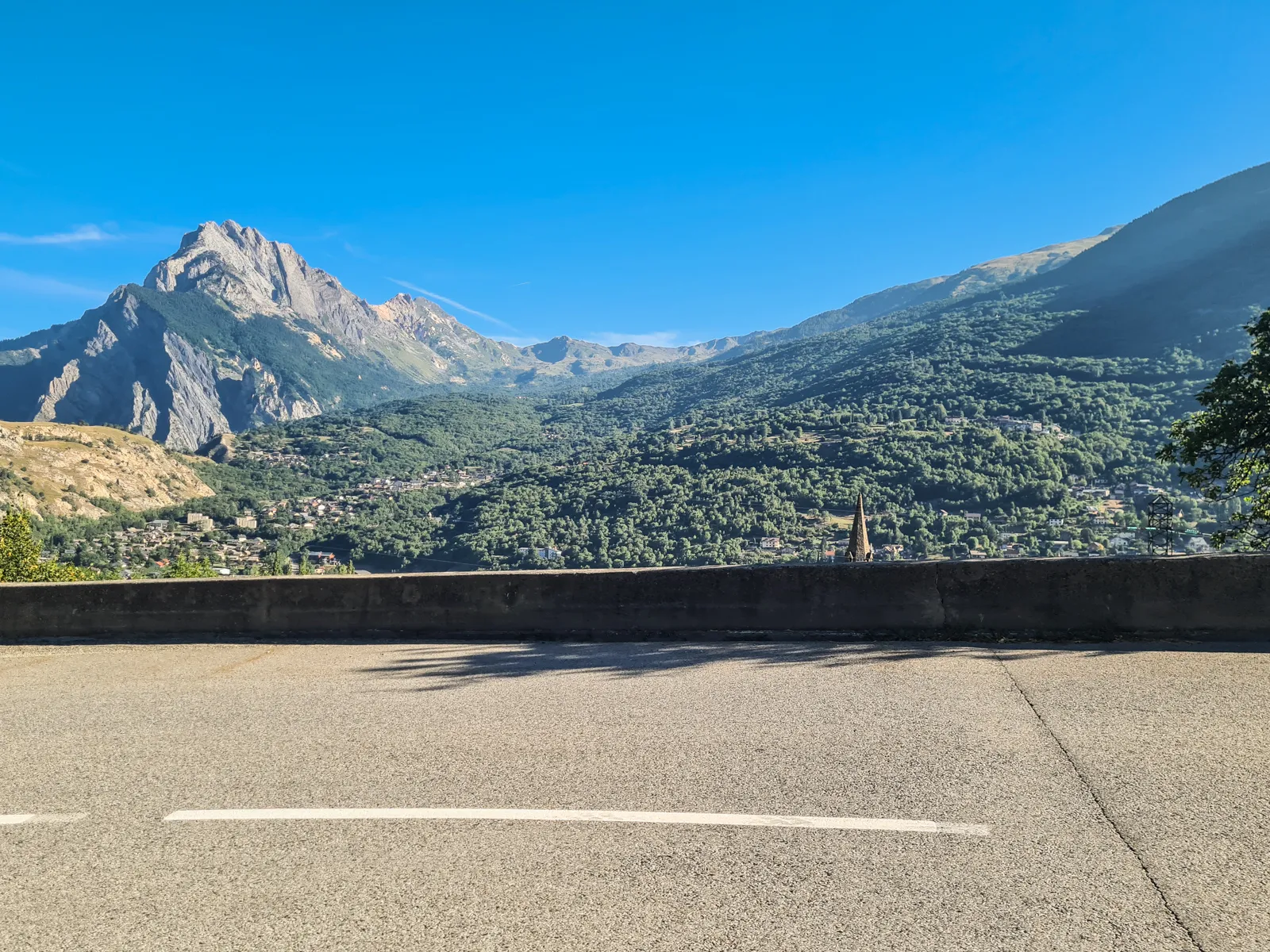
Col du Télégraphe serves as a sort of entrée to Galibier. It’s no small feat on its own, climbing over 800 meters, yet in the cycling world, it’s often seen as merely a precursor to the main event. To my relief, the ascent went flawlessly. Spinning at a comfortable cadence, I kept both my power and heart rate in check, staying within endurance and tempo zones. Without overexerting myself, I even managed to pass a couple of riders, calling out, “Allez! Allez!” as I overtook them. I wasn’t riding fast, just keeping a steady pace. After a little over an hour, I spotted the iconic cyclist sculpture made of hay at the summit. I pushed past it and began the short descent into the valley.
Valloire, a small touristy village, seems to thrive on the Tour de France during the summer months. Nearly every other establishment boasts a souvenir shop or sells memorabilia related to the event, especially this year, when the village hosted a stage finish won by Tadej Pogacar after a daring descent from Galibier. Over a month later, the streets remained adorned with yellow, green, white, and red polka dot decorations. Determined to attempt a non-stop ascent from the valley floor, I passed the village center and headed toward the southern road leading to the pass.
The climb began with a mellow gradient, easier than almost anything I’d tackled up to that point on the trip. But I was bewildered when I started feeling sponginess in my thighs, a sensation that usually doesn’t appear until mid-October, when my body signals it’s time for rest after a long season of riding. My power began to fade—slowly at first—shifting from a low tempo to high Zone 2. I consumed a gel, hoping it would restore my energy in 5–10 minutes, and flushed it down with water. Then, I realized how parched I was. It wasn’t particularly hot—my GPS showed no more than 30°C—but no matter how much I drank, I couldn’t quench my thirst. I hadn’t felt this dehydrated in years, despite drinking regularly as I normally do.
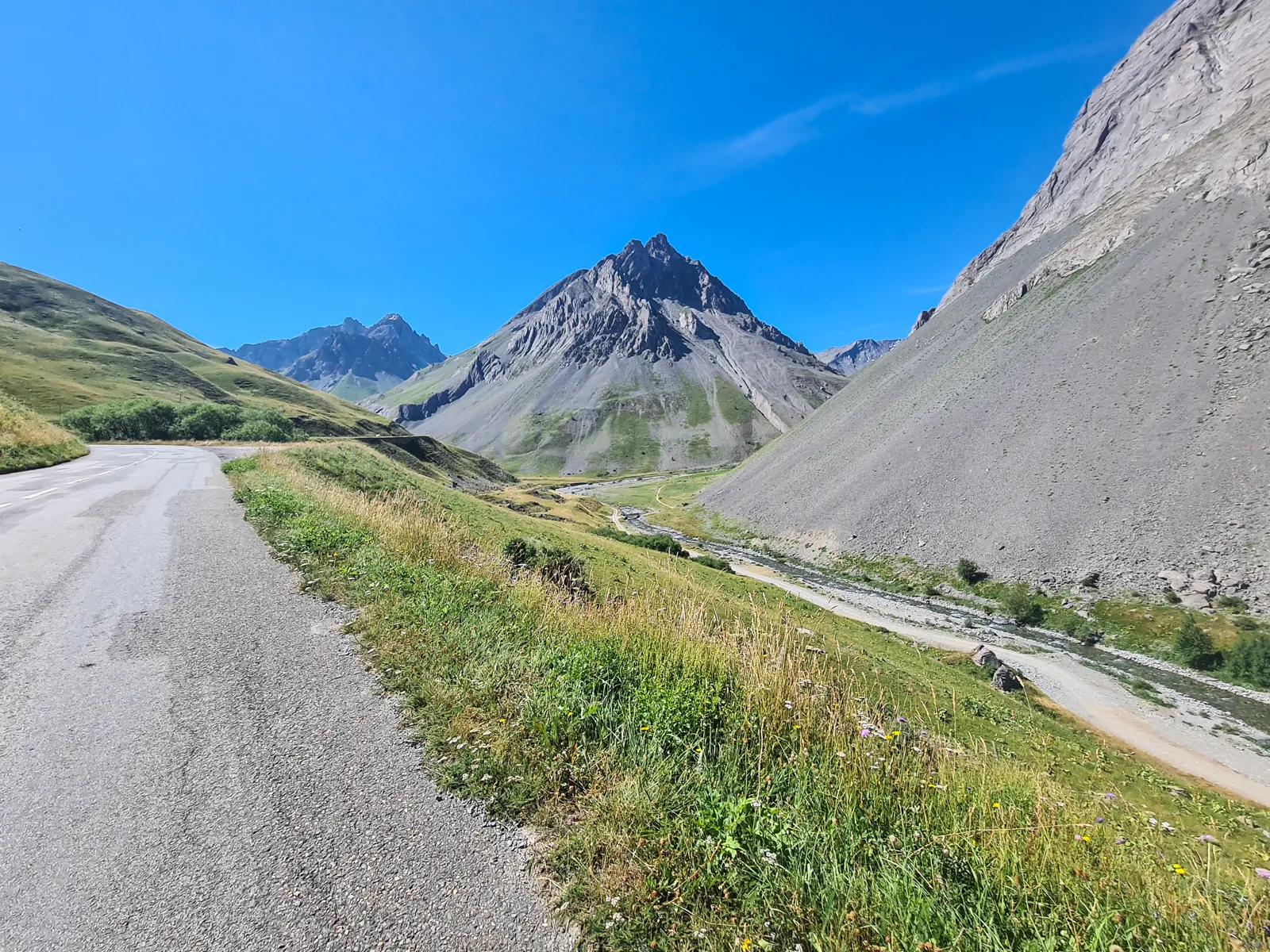
By this point, I was dragging my wheels, overtaken by every other cyclist climbing the mountain. But my problems didn’t end there. With every sip, I felt my stomach swell, like an overfilled pot on the verge of boiling over. I feared I might throw up everything I’d drunk in the past hour, spraying my precious fluids all over the stunningly beautiful scenery. My power output dropped even further until I was barely moving forward, sheer willpower keeping me on the bike as I carefully balanced effort against the fear of an explosive barf. I felt so wretched that I turned off my music—my favorite band, no less—as it only made me more anxious.
My dream of ascending Galibier in triumph, at a solid pace, had evaporated. Gripping the handlebars, grunting and moaning, I forced myself to ride just one more kilometer, just to the next bend. But when the road curved, and the next stretch of the climb revealed itself, a part of me wilted inside. Barely making it to a roadside café, I nearly collapsed off my bike.
Desperate for relief, I impulsively ordered an espresso and a Coke—a combination that wasn’t exactly gentle on my stomach but was what my brain craved. I rested, enjoying the views and the breeze, surrounded by MAMILs (Middle-Aged Men in Lycra) sipping beers. Hating my display of weakness but resigned to this course of action, I knew I still had the hardest 8 kilometers ahead.
After 17 minutes of rest (which felt like an eternity), I refilled my water bottles and reluctantly climbed back onto the saddle. Pointing my wheels uphill, I began again, trying to conserve energy and go as easy as possible. Slowly, strength returned with each crank. I raised my cadence a notch, bringing my power back into the low-tempo zone. Still slow, but no longer dying with each pedal stroke, I found joy creeping back into the ride. As I gained elevation, the breathtaking scenery renewed my spirit. I laughed to myself, overwhelmed with happiness, even as the steeper sections tested me. I’d survived one of the worst bonks of my life and was now reveling in one of the most spectacular places I’d ever ridden, climbing a pass steeped in cycling history.
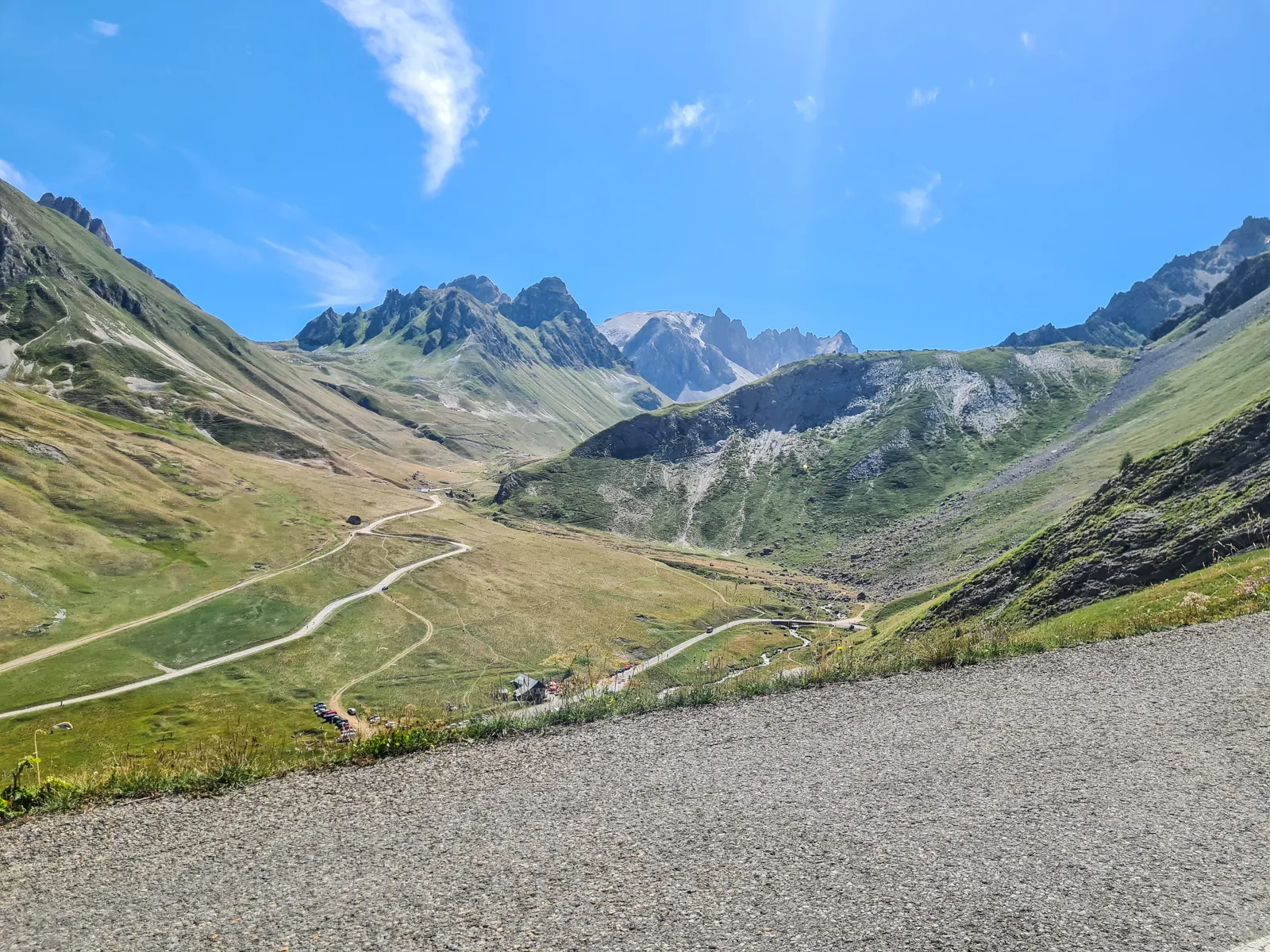
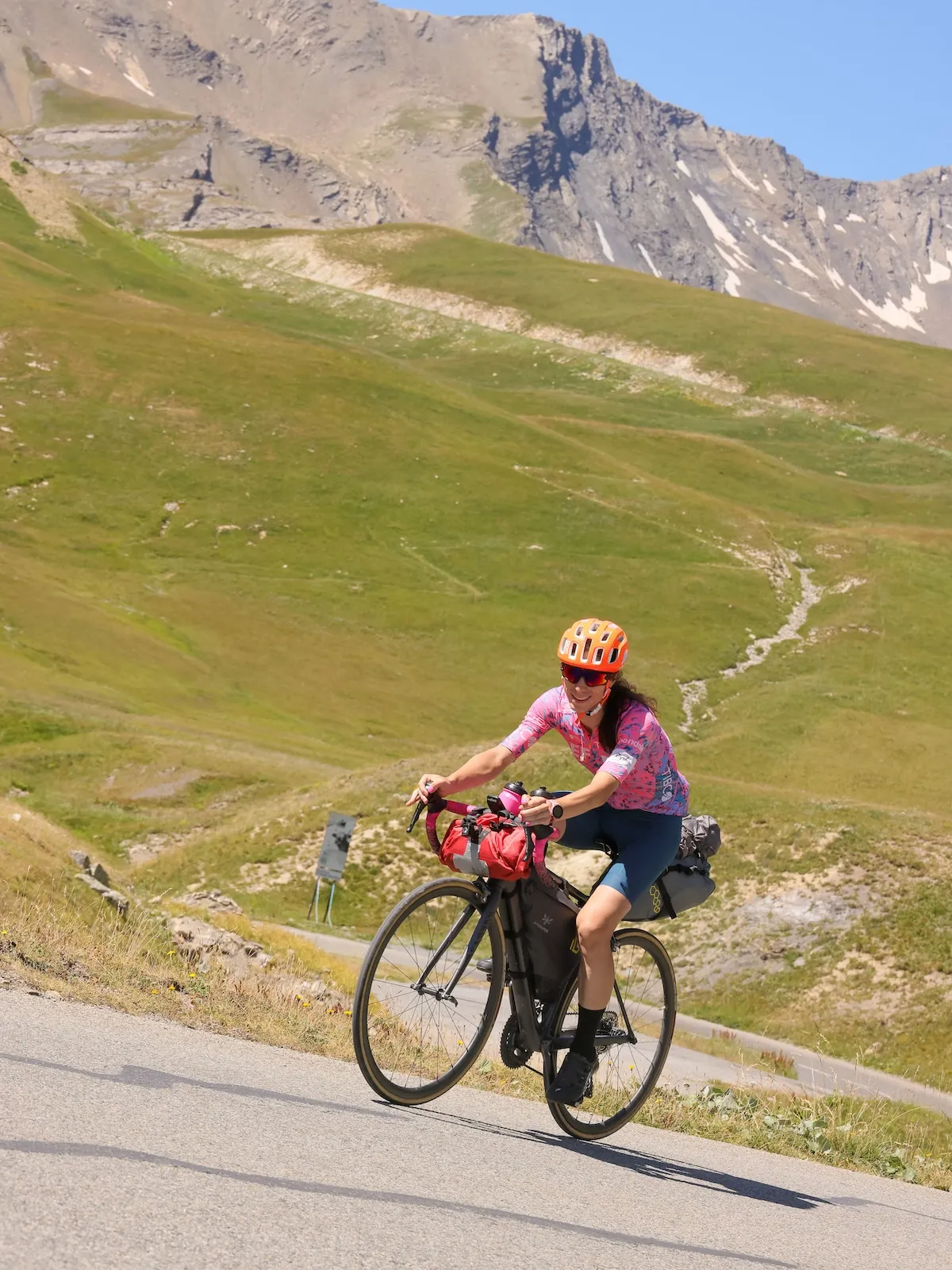
I reached the summit in good spirits. During a quick break, I decided to cut my ride short for the day. With two buffer days in my schedule, I realized my body needed proper rest. Reflecting on the previous day’s issues—trouble eating a simple bar and croissant, and the full-on exhaustion—I finally pieced everything together. My body was pleading for recovery. A glance at the map, and I adjusted my plan: a campsite high in the valley, halfway to Briançon, would be my new destination. I snapped a few photos, put on my wind jacket, and began the descent toward Col du Lautaret.
On descents, balancing risk and enjoyment is always a challenge, especially on winding roads. Gravity takes over quickly, and before you know it, you’re hurtling downhill at over 60 kph on skinny tires with only a 220 grams of a helmet for protection. Up here, , high in the mountains, the treeless landscape allows you to see far ahead. Scanning the road ahead, you plan your trajectory. You don’t see any cars in the distance, and you know the game is on. You move to the outside lane to take the racing line. Braking hard before the turn, you cut across the road into the apex and accelerate out, nearly brushing the grass before returning to the right lane.
Then you tackle a series of high-speed, shallow turns, and you fly through them smoothly, barely touching the brakes. The mesmerizing views pass by in a blur, shifting with each moment. You catch only fleeting glimpses, knowing that every second your eyes aren’t on the road is a potential risk. After the thrill of the last high-speed turn, you take another one in a similar manner. And again. And after the next turn you realize this time, you didn’t really have visibility over the apex, and on the previous one, you might have been a bit too close to the edge of the road than your comfort zone suggests…
Stopping at Col du Lautaret, I cleaned my glasses, which bore the unfortunate remains of a fly that had collided with me at high speed. The remainder of the descent to Le Monêtier-les-Bains was a straight, wide main road, perfect for enjoying the wind in my hair with less worry. Arriving in town early, I was lucky to grab the last meal served before the lunch break. I indulged in a huge pizza and endured a cappuccino worse than instant coffee. After some shopping, I made my way to a quiet, beautifully situated campsite. There, surrounded by mountains, I had time to reflect on a day full of challenges, triumphs, and lessons. Despite the difficulties and moments of doubt, I felt grateful for every moment of this adventure.
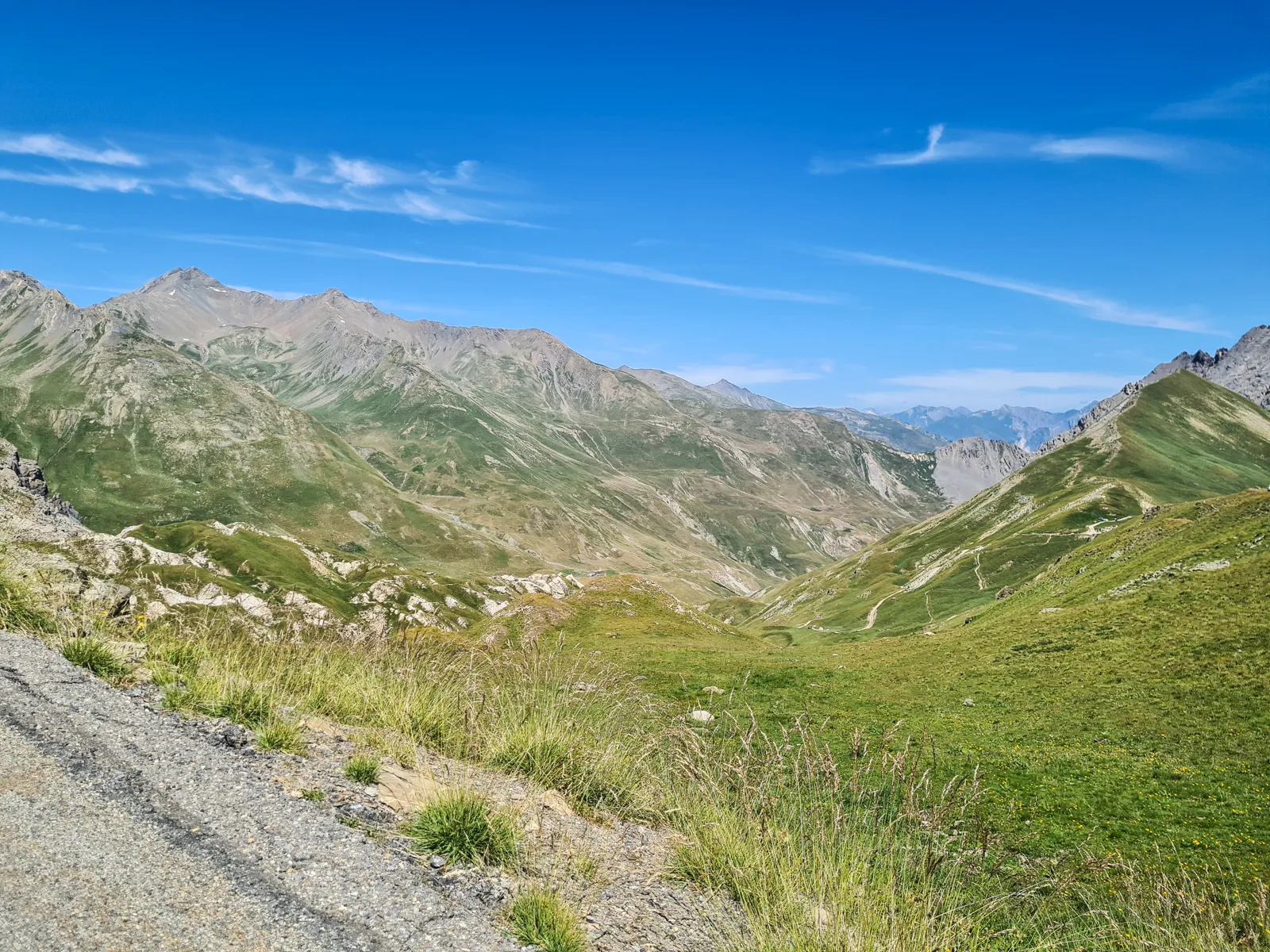
To be continued...
Strava - Stage 4 - Chamonix-Mont-Blanc to Notre-Dame-du-Briançon
Strava - Stage 5 - Col de la Madeleine, Lacets de Montvernier, Col du Chaussy
Strava - Stage 6 - Col du Glandon, Col de la Croix de Fer, Col du Mollard
Strava - Stage 7 - Col du Télégraphe, Col du Galibier, Col du Lautaret
